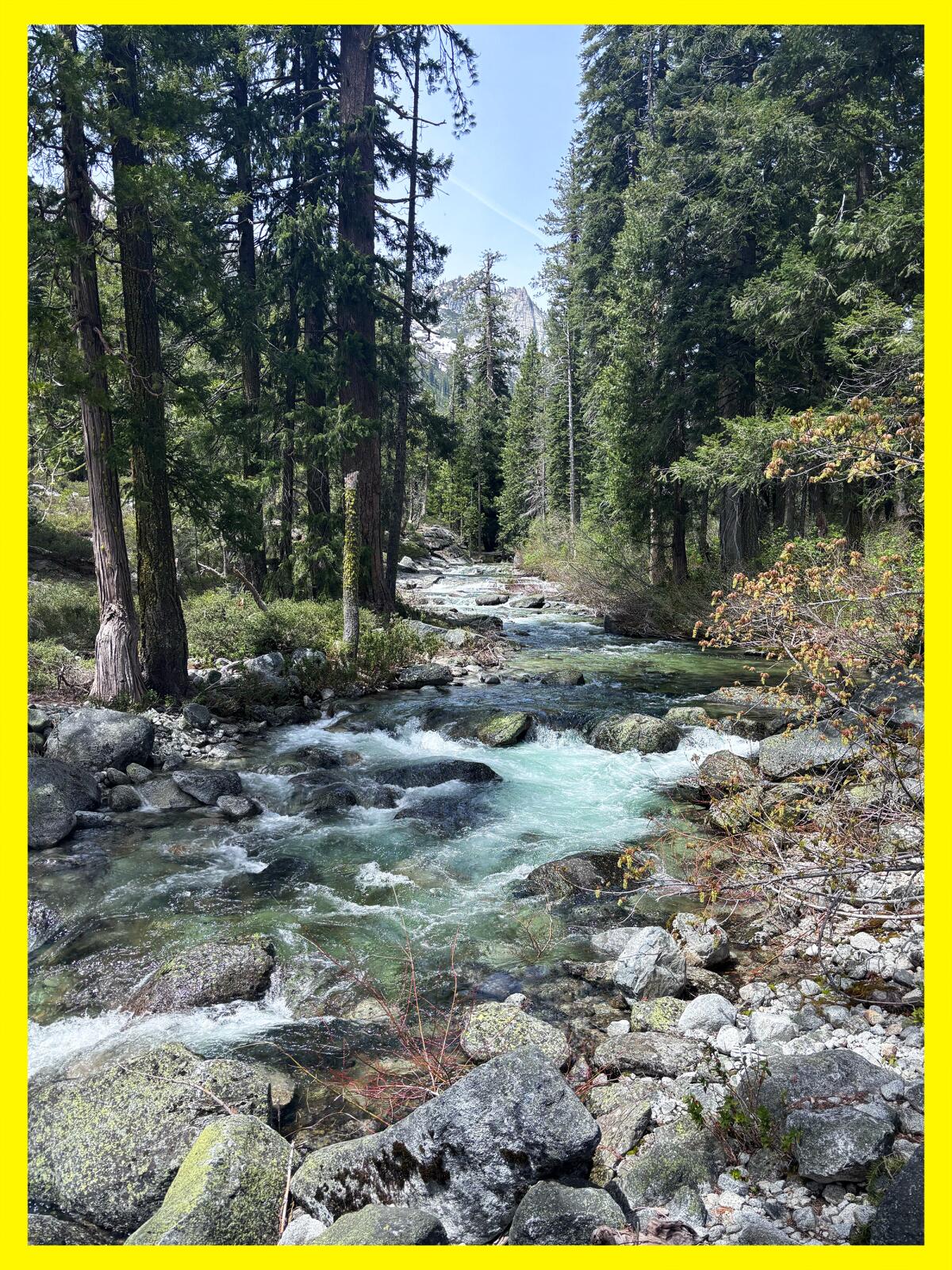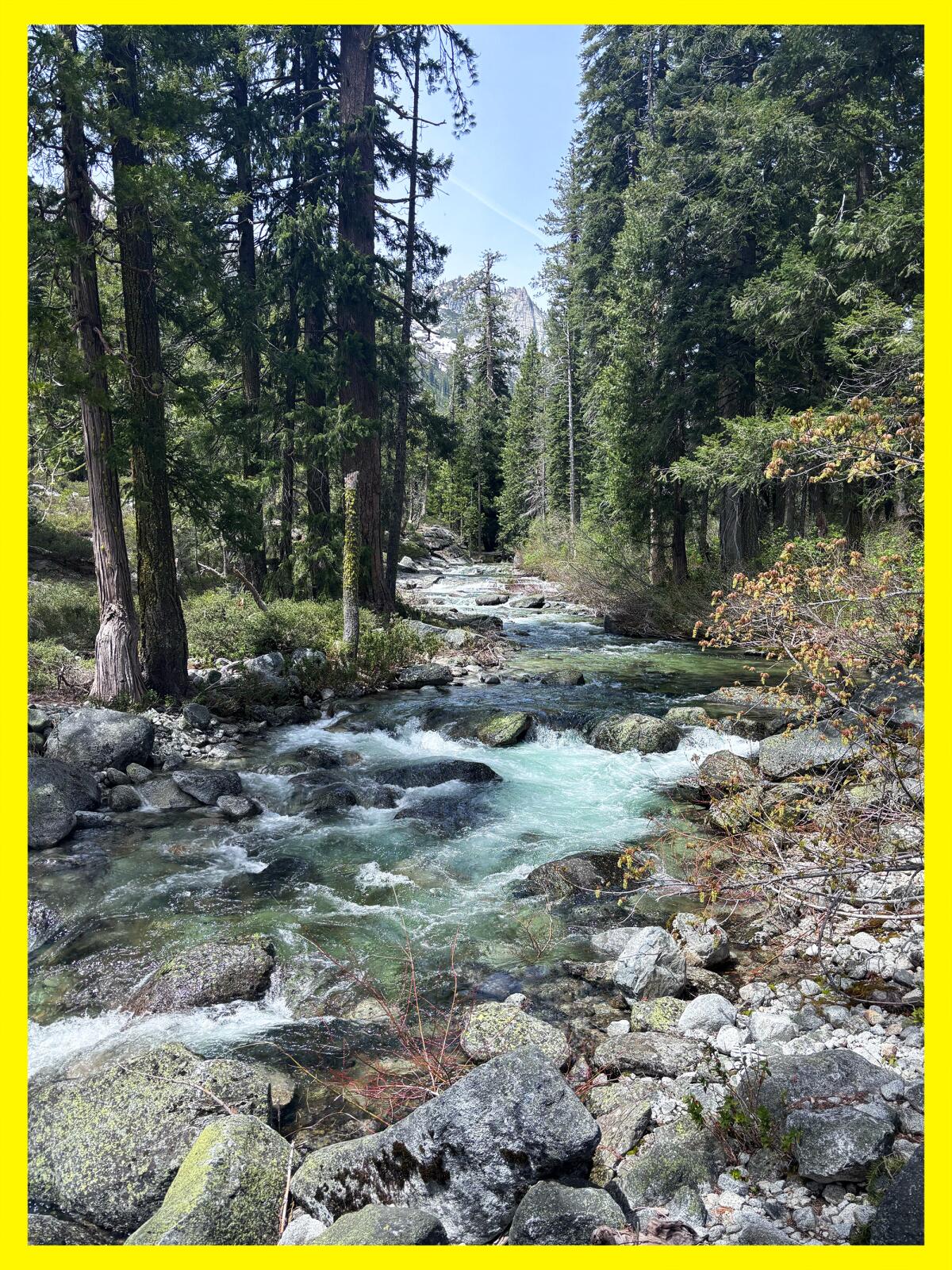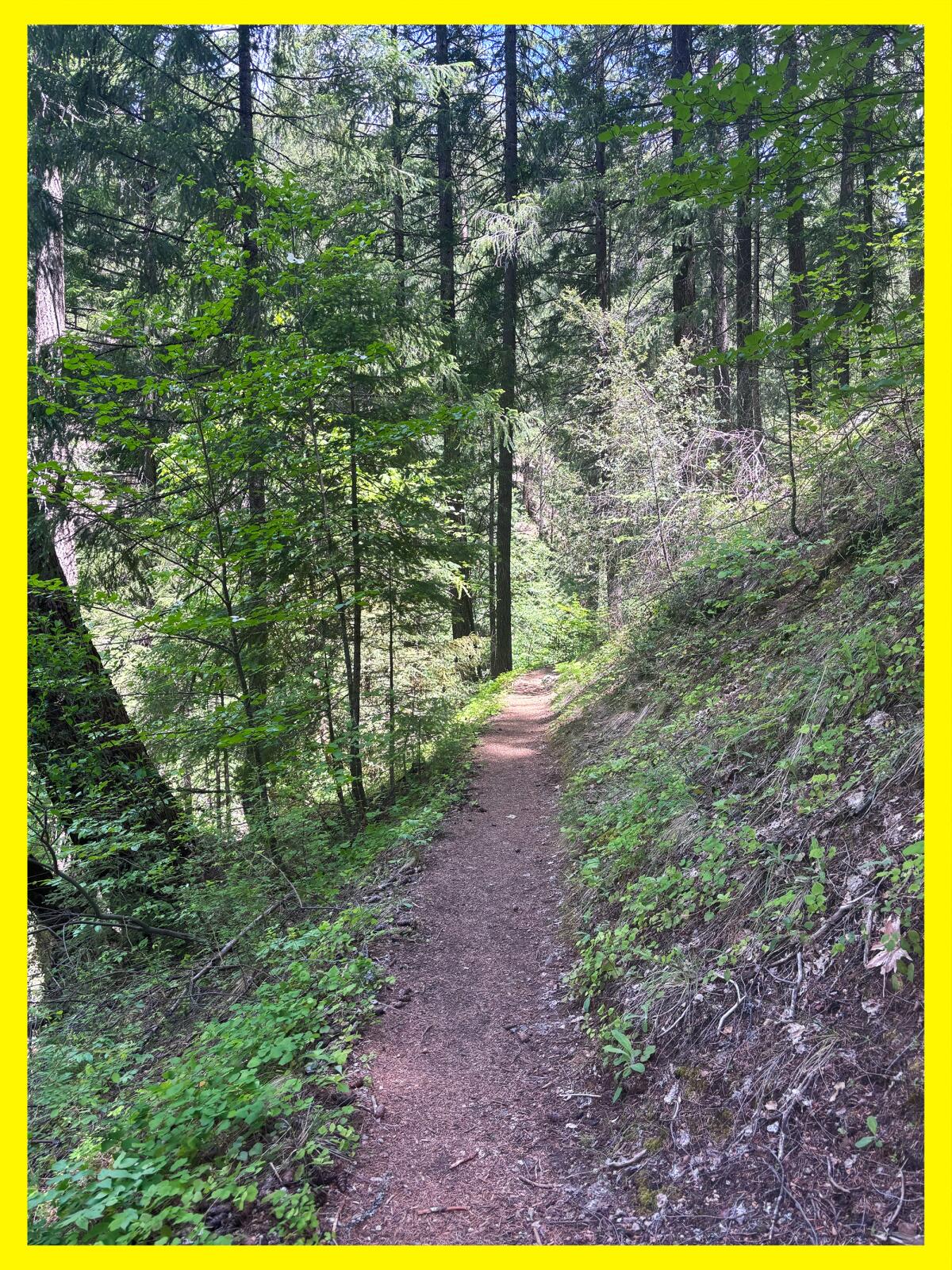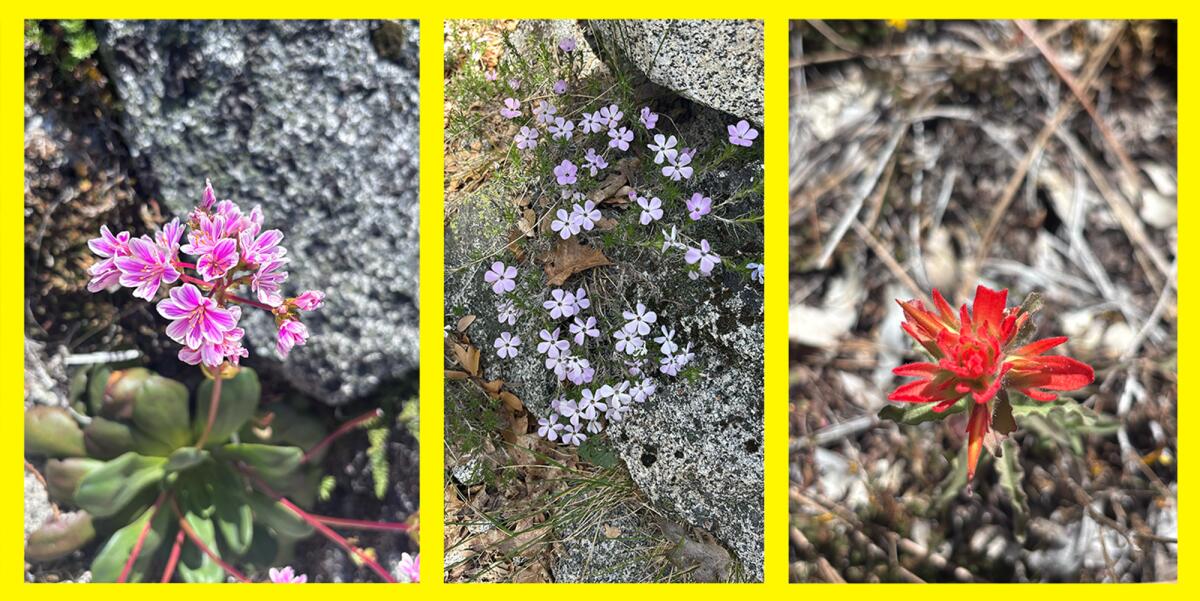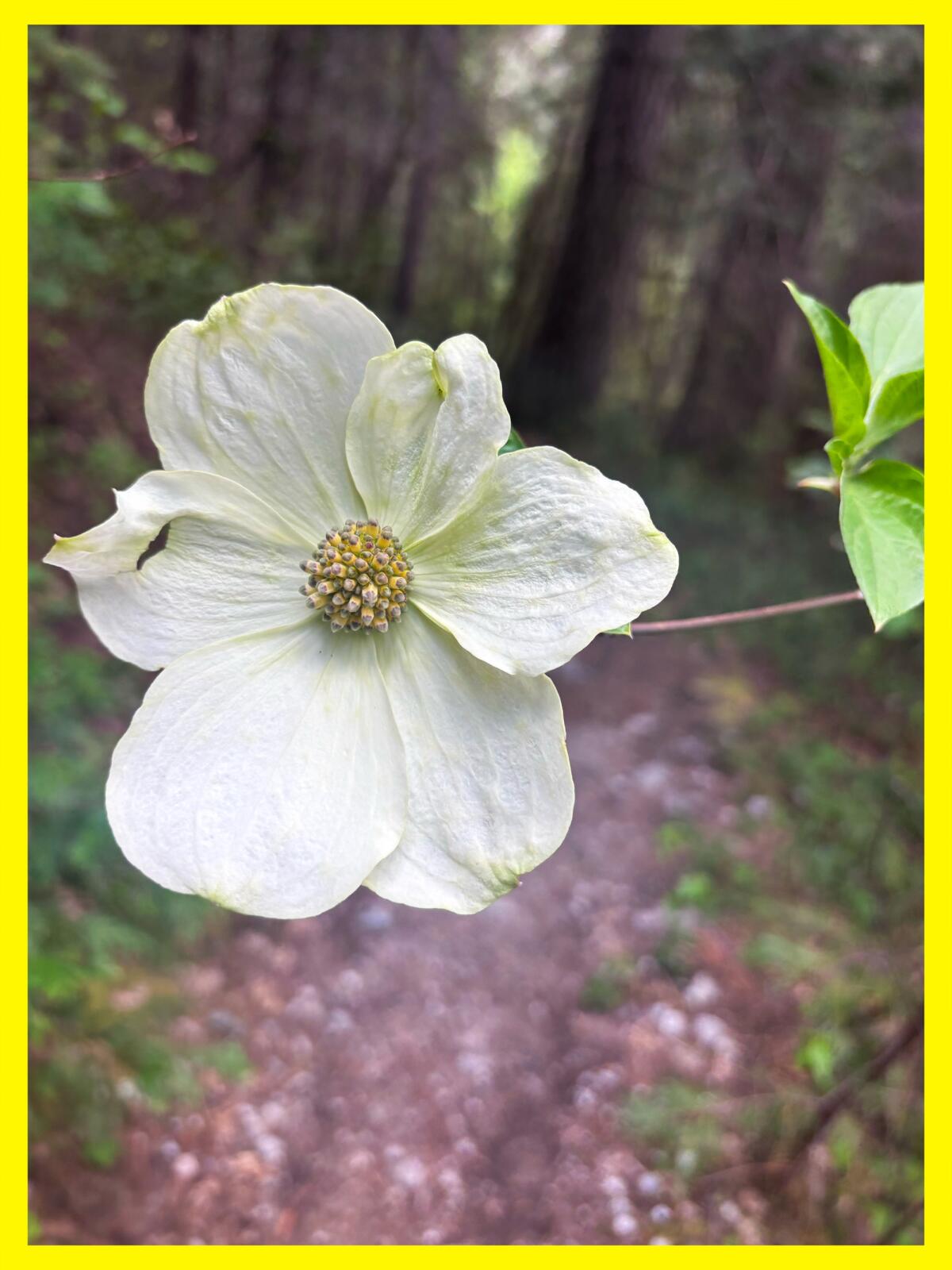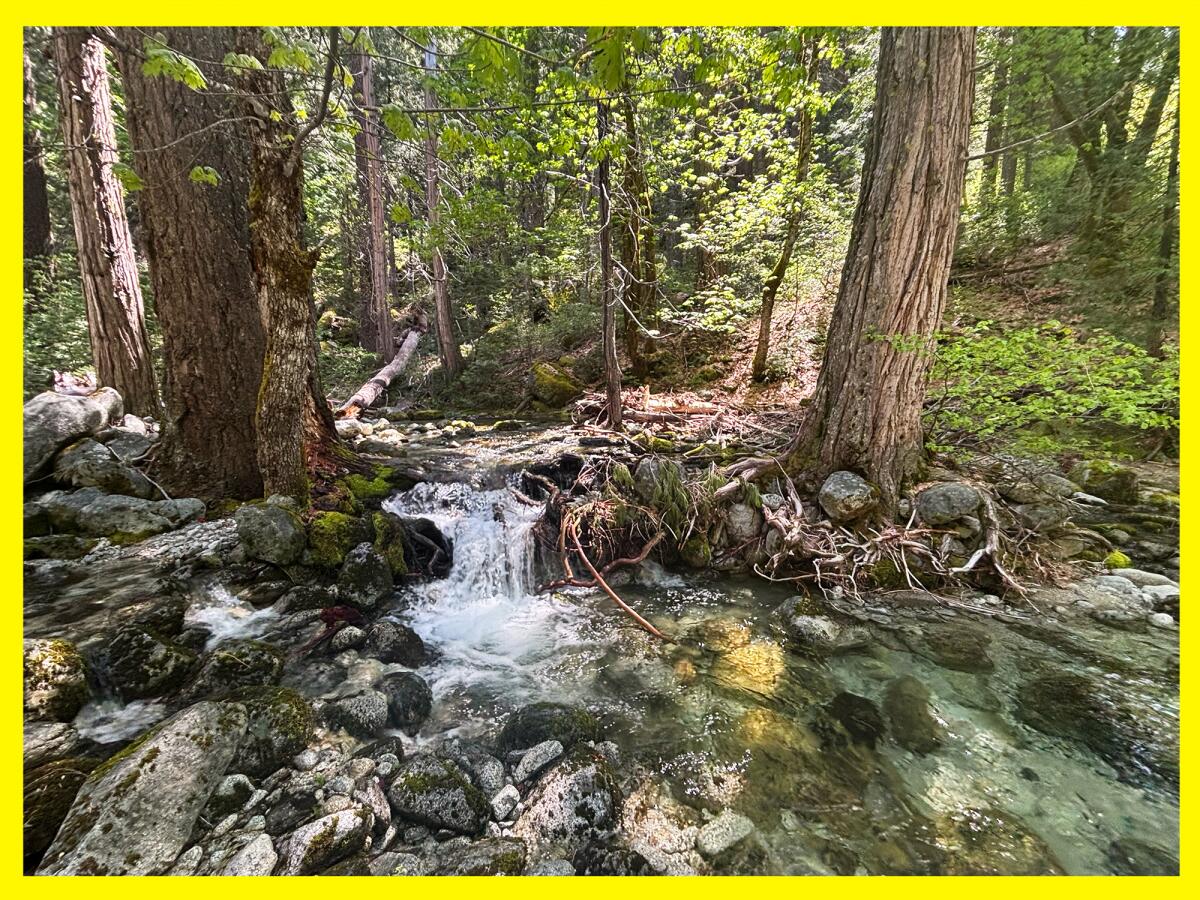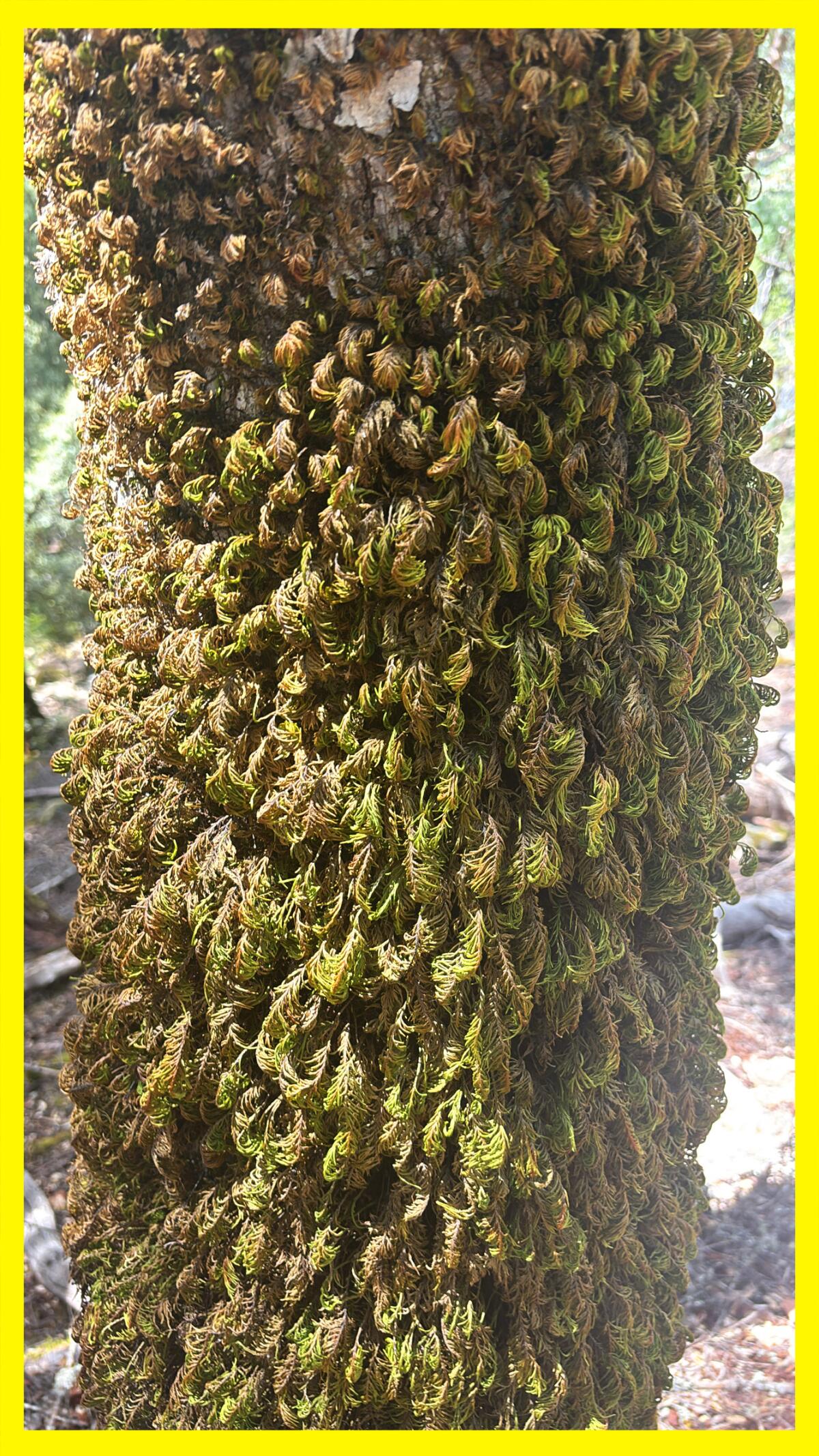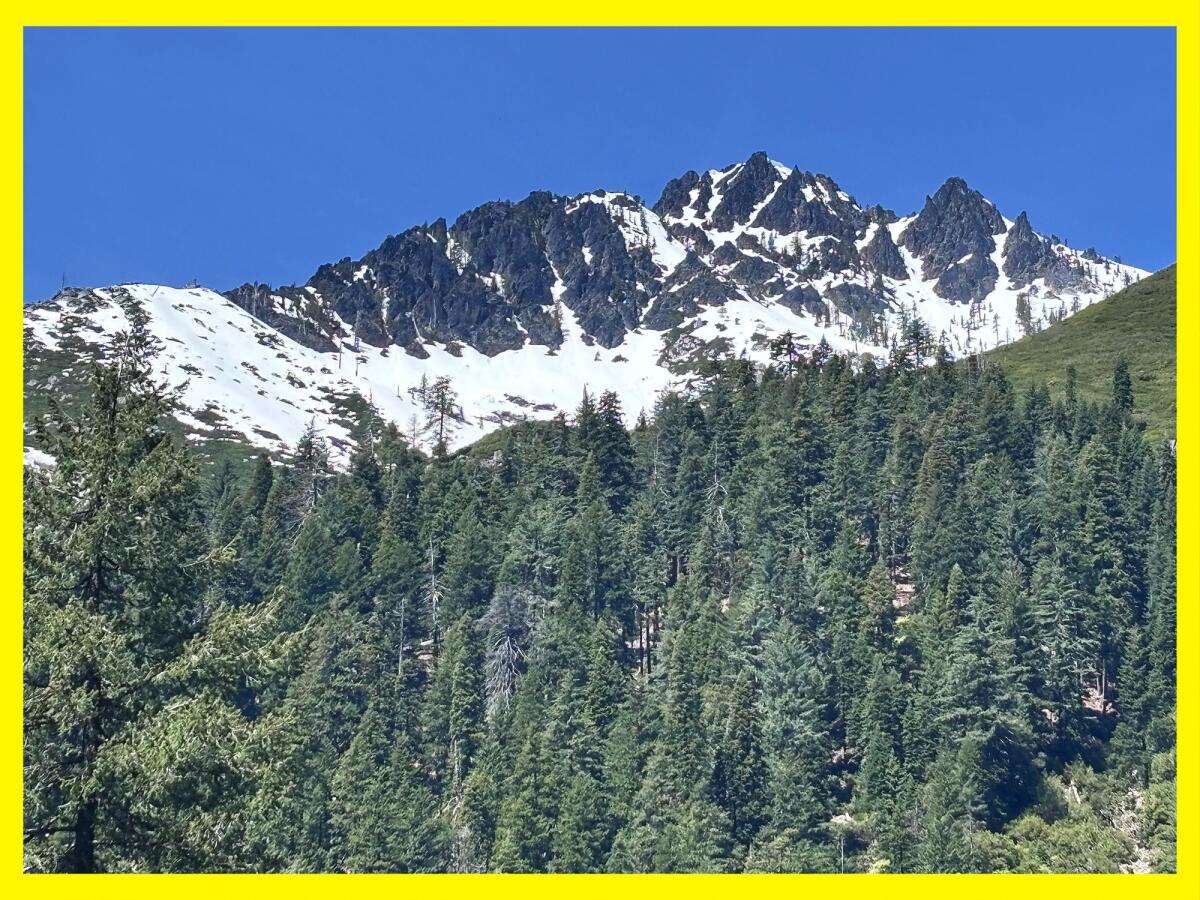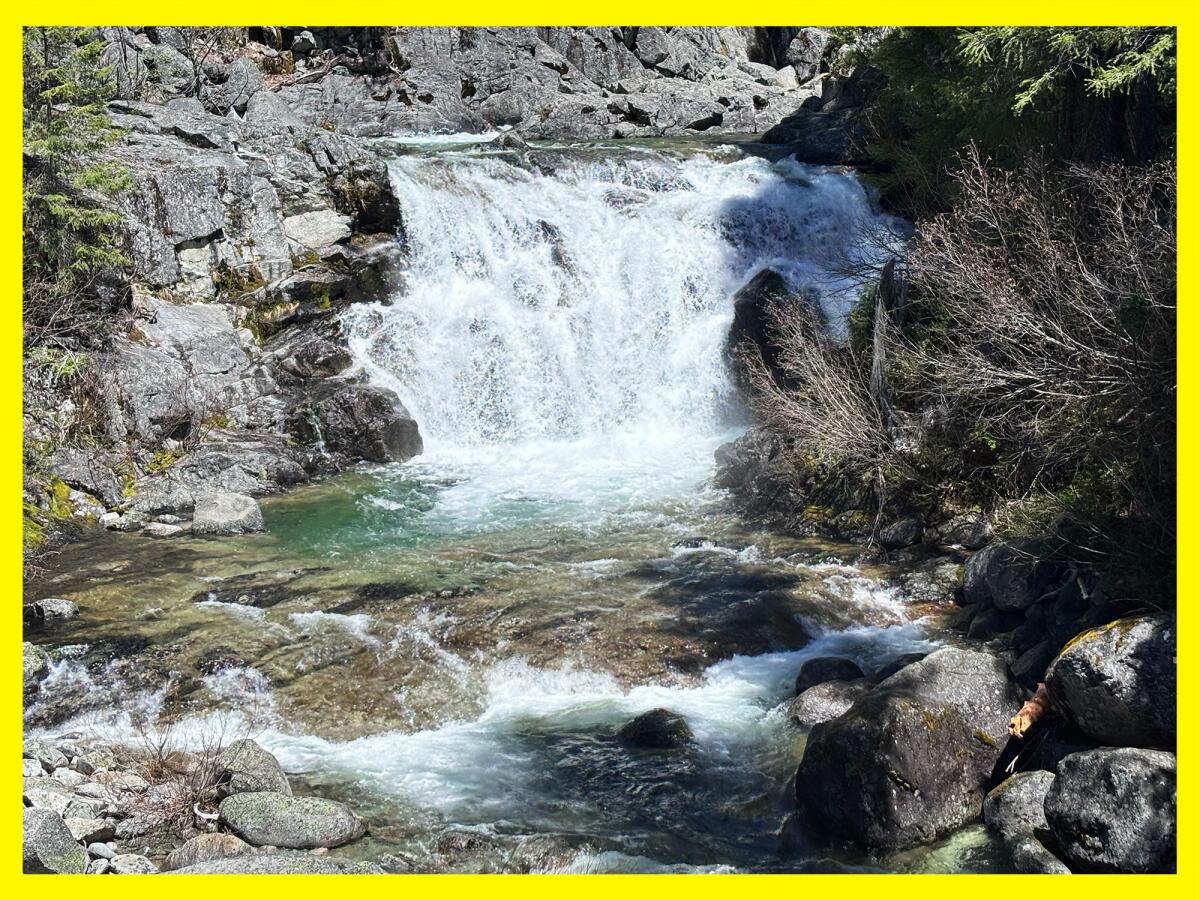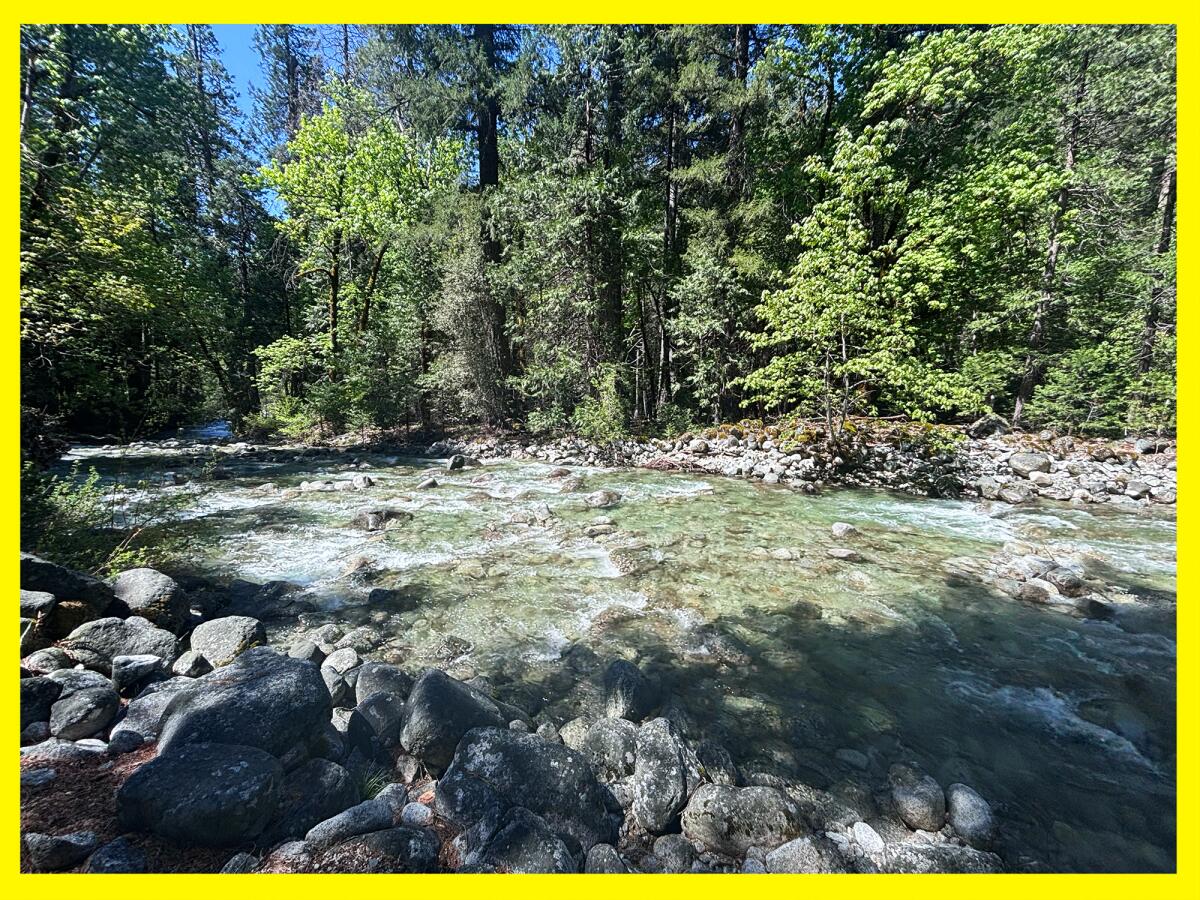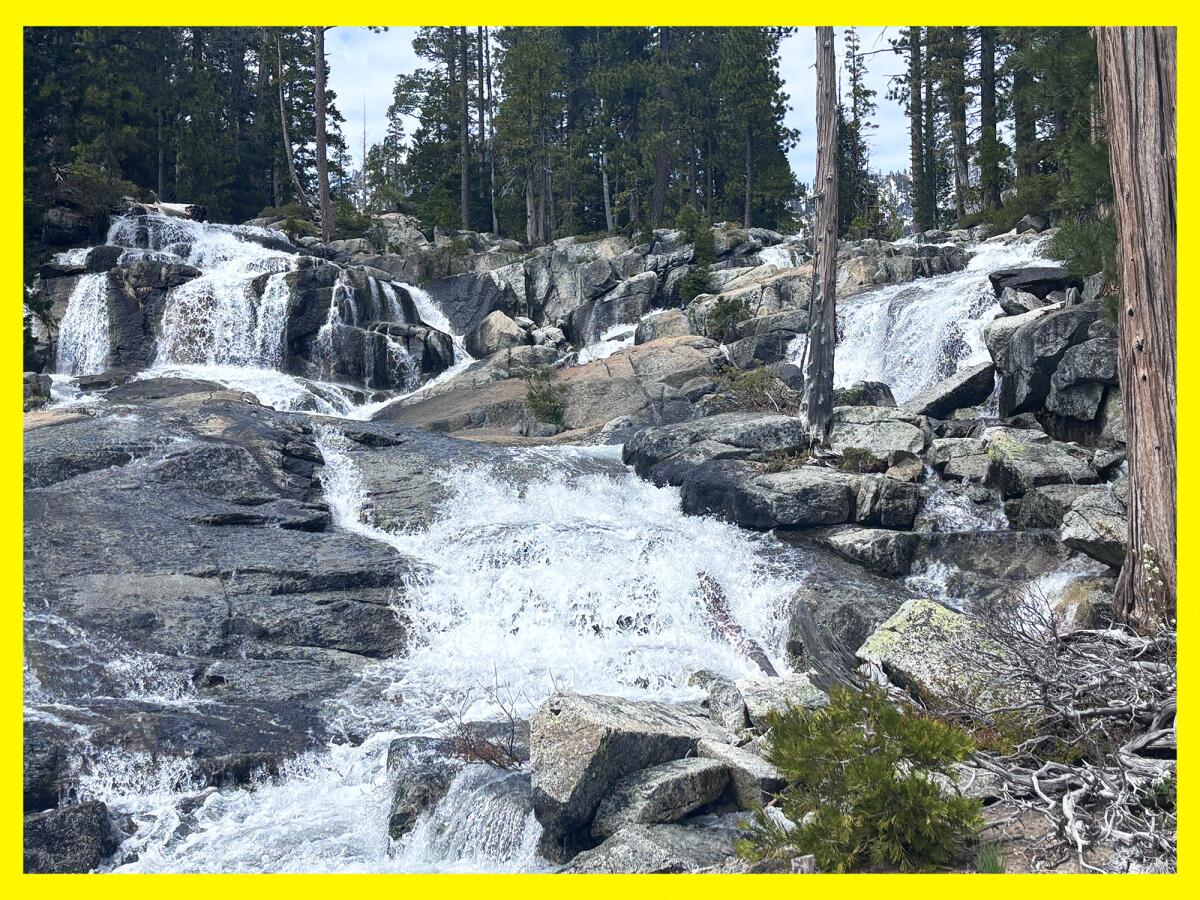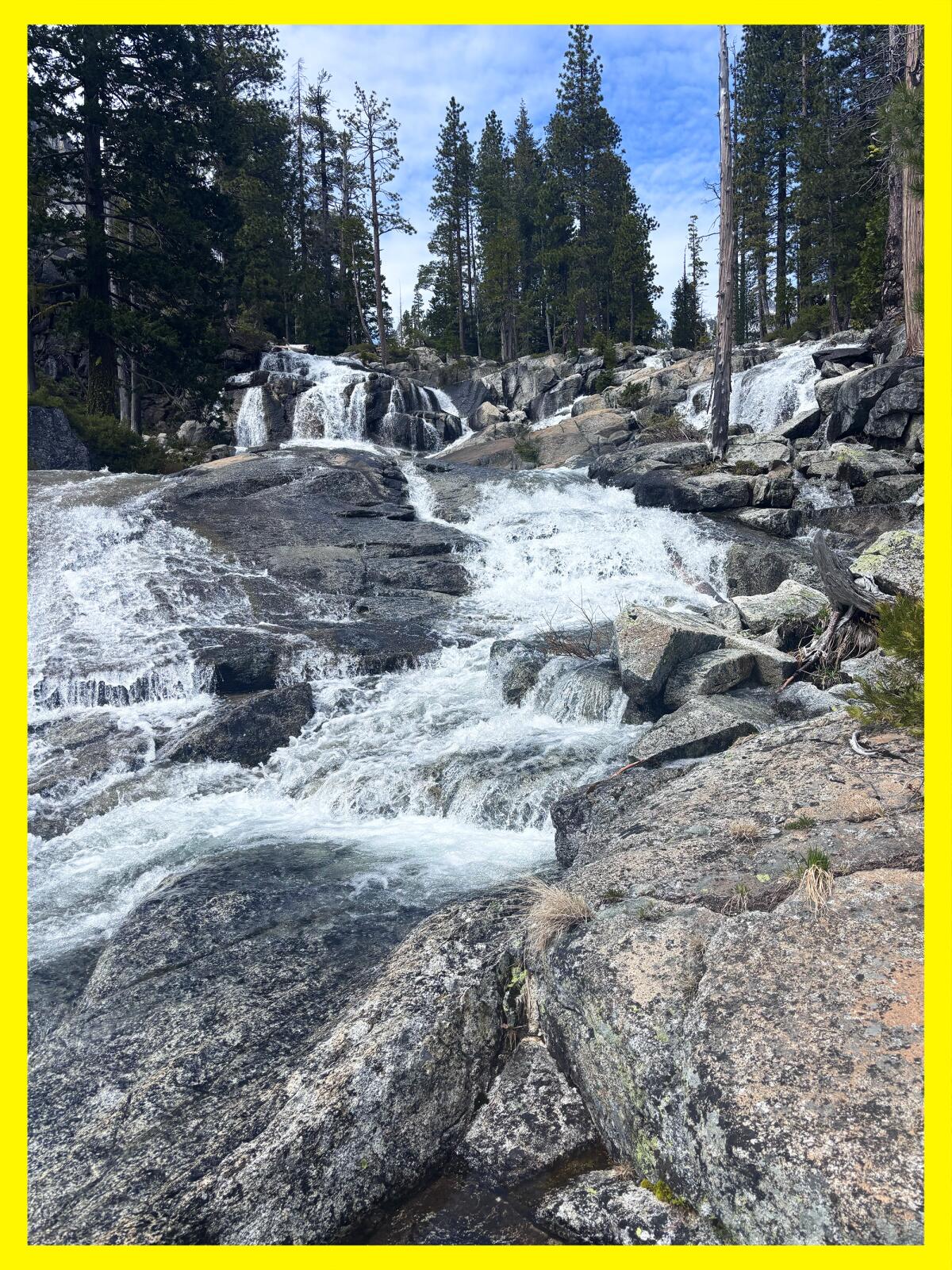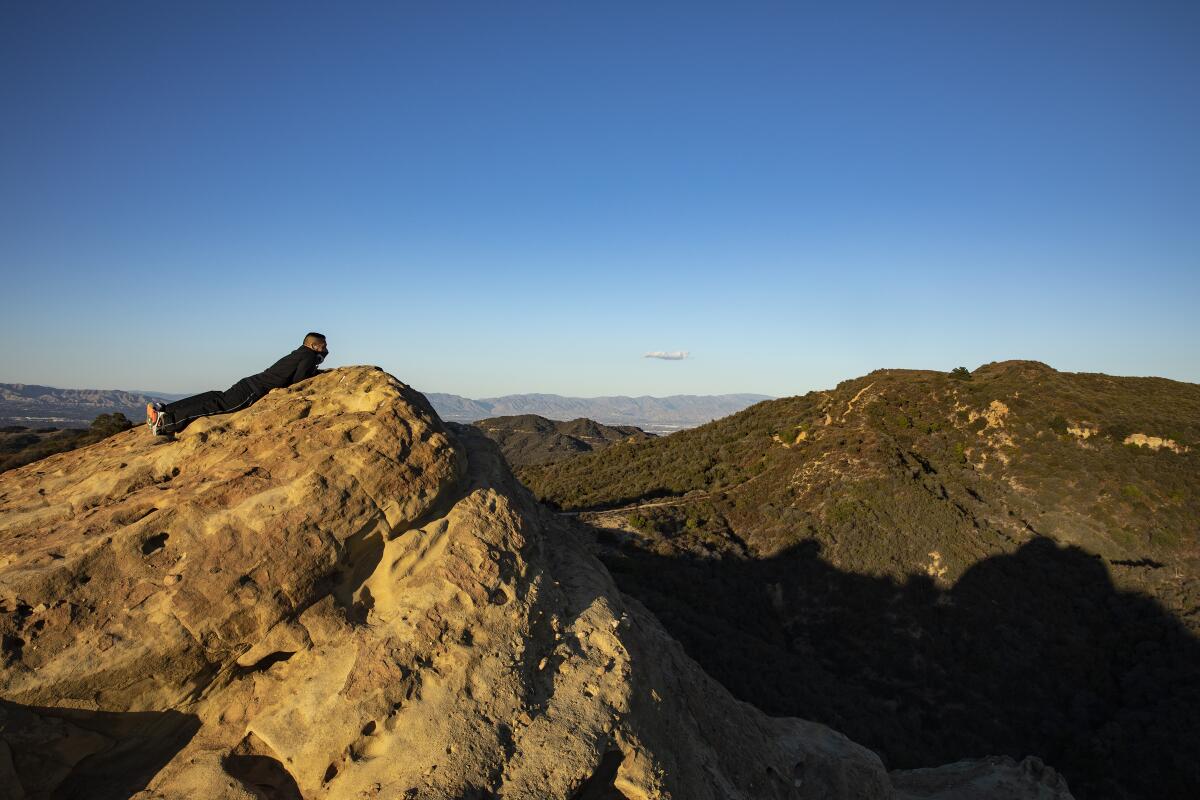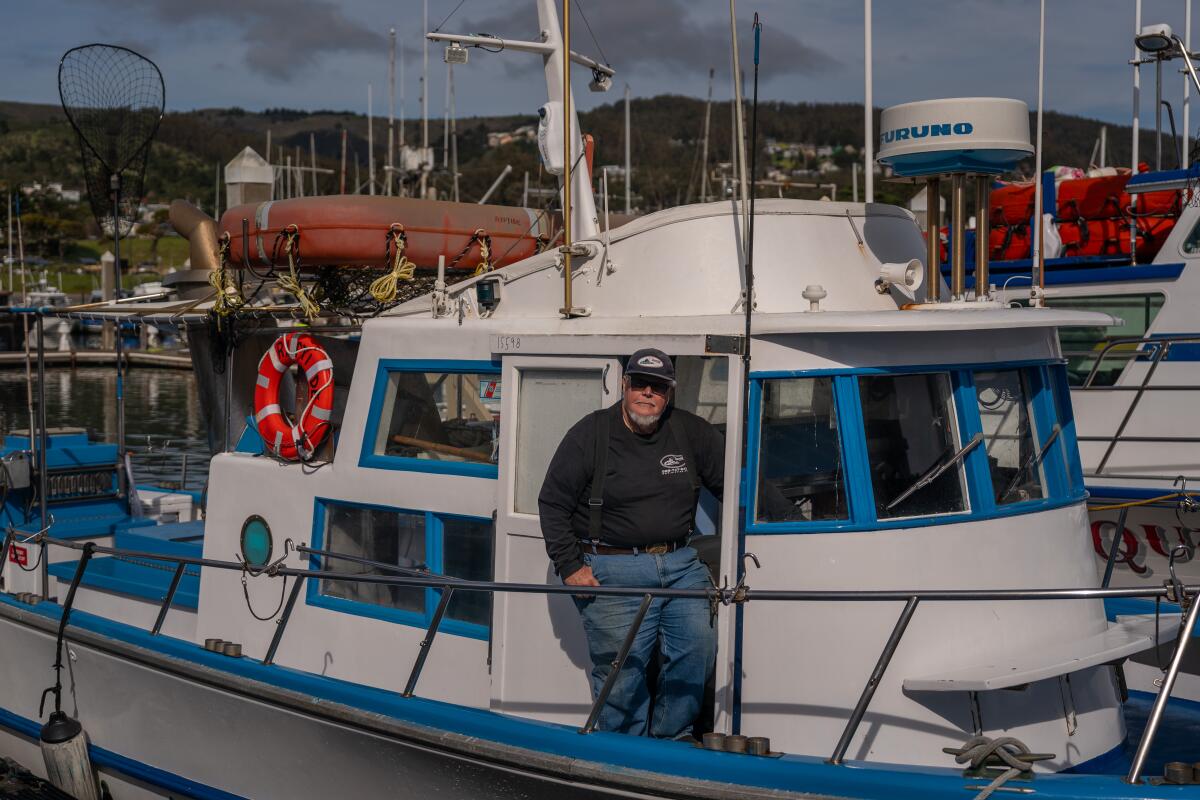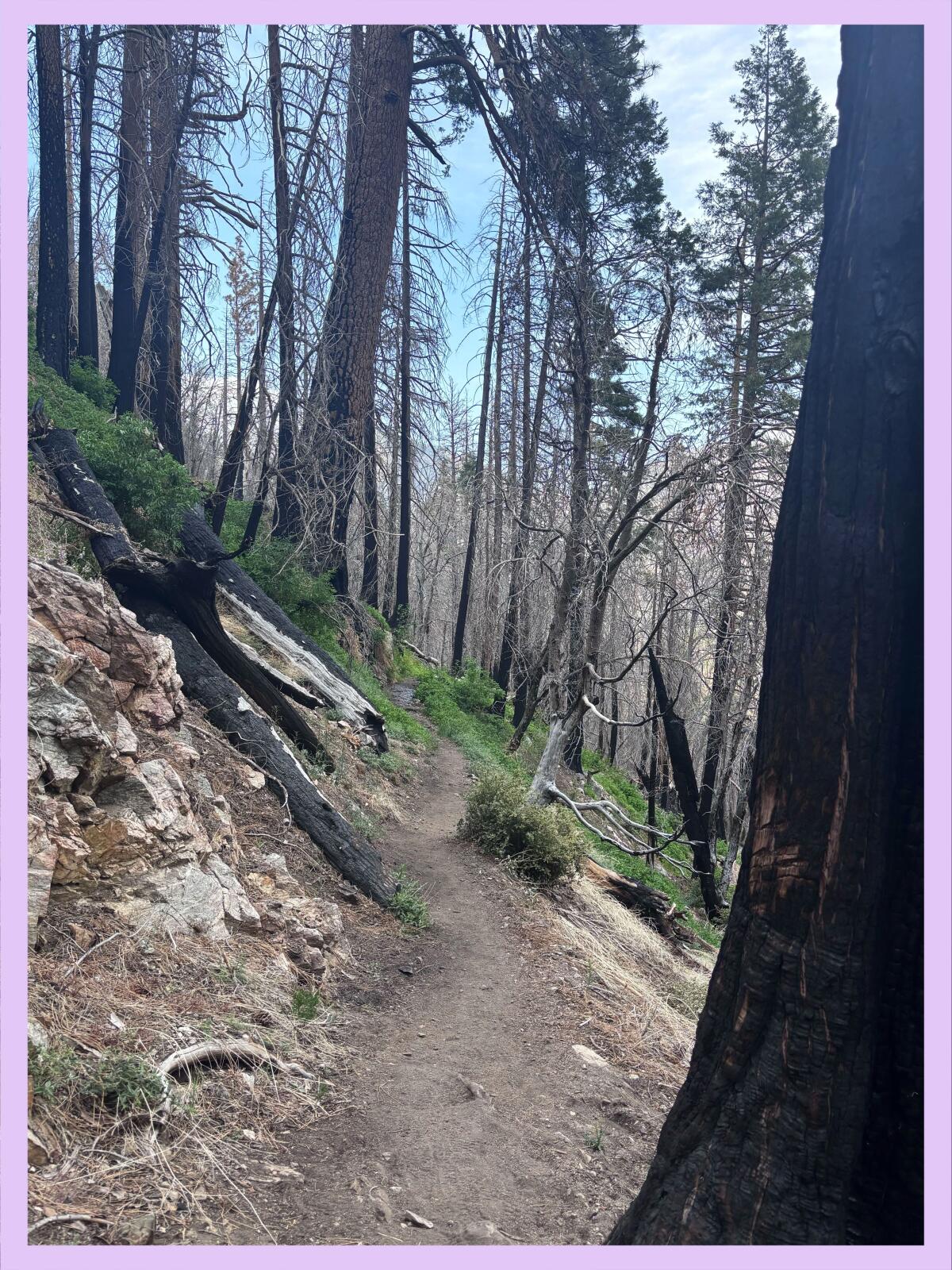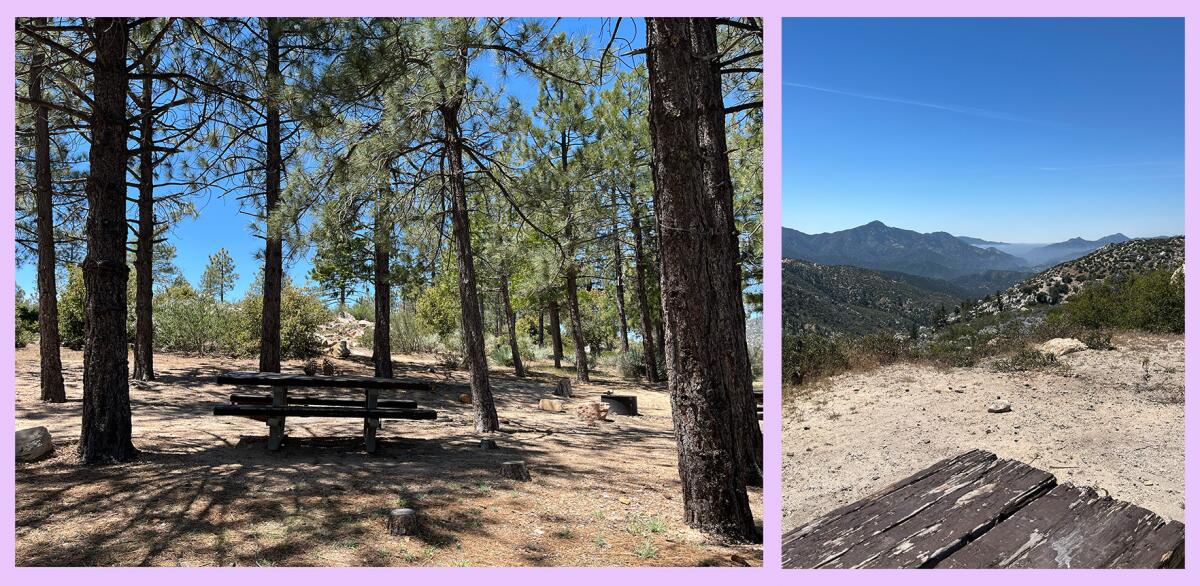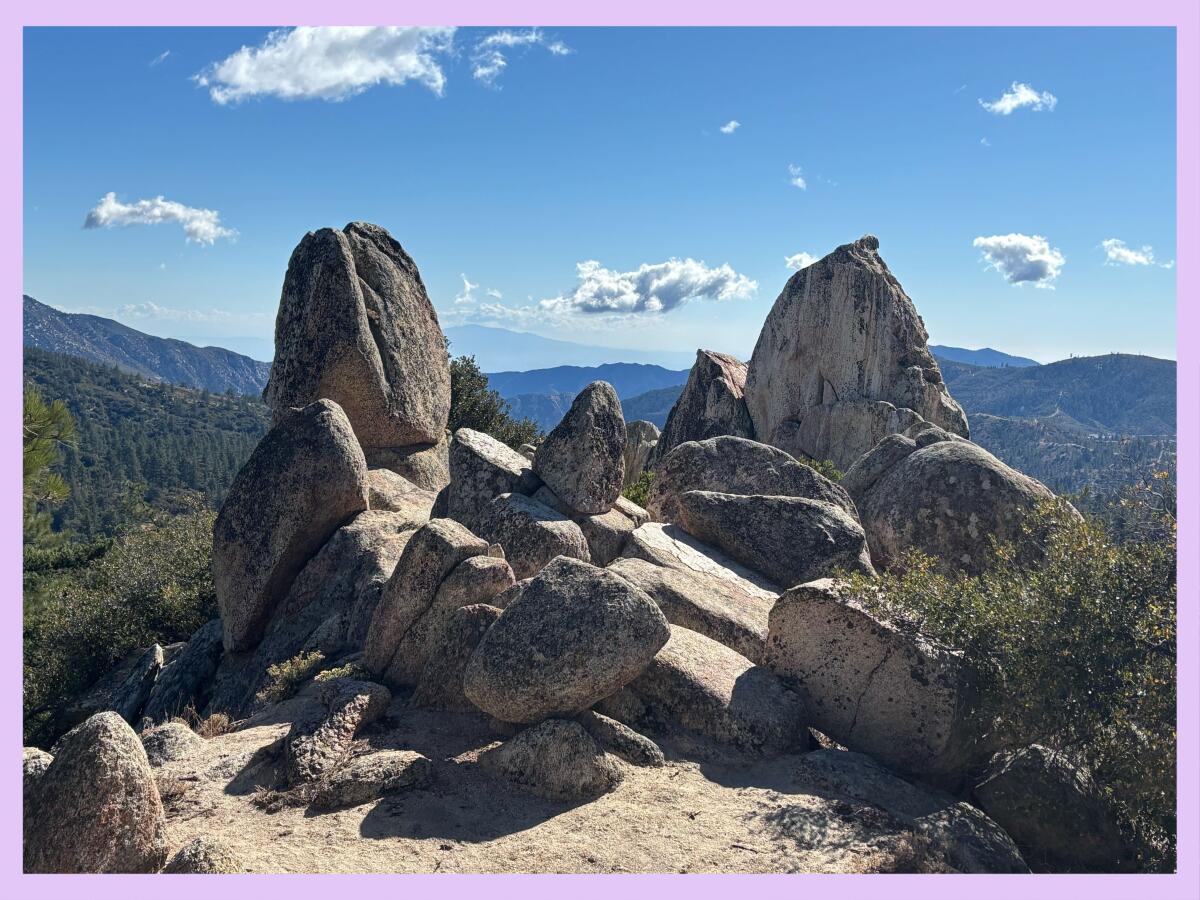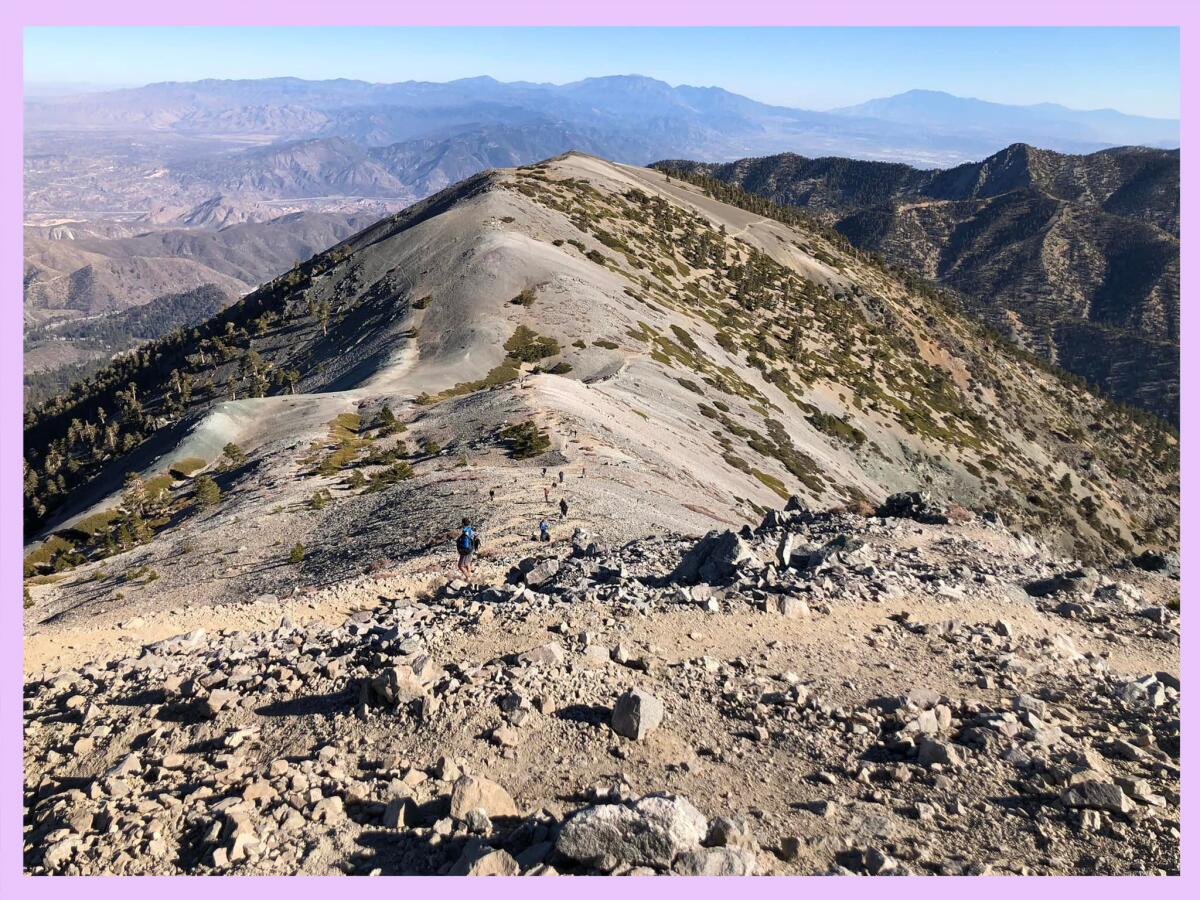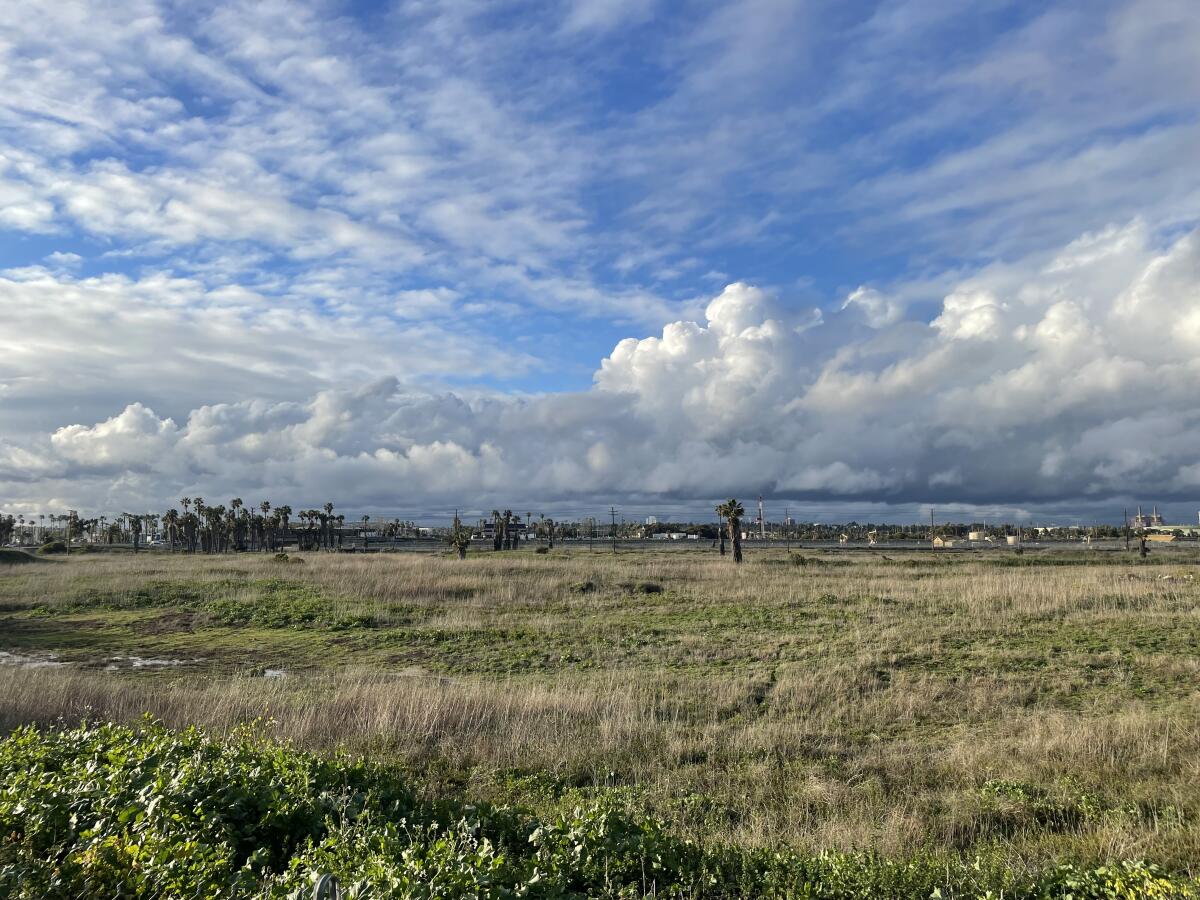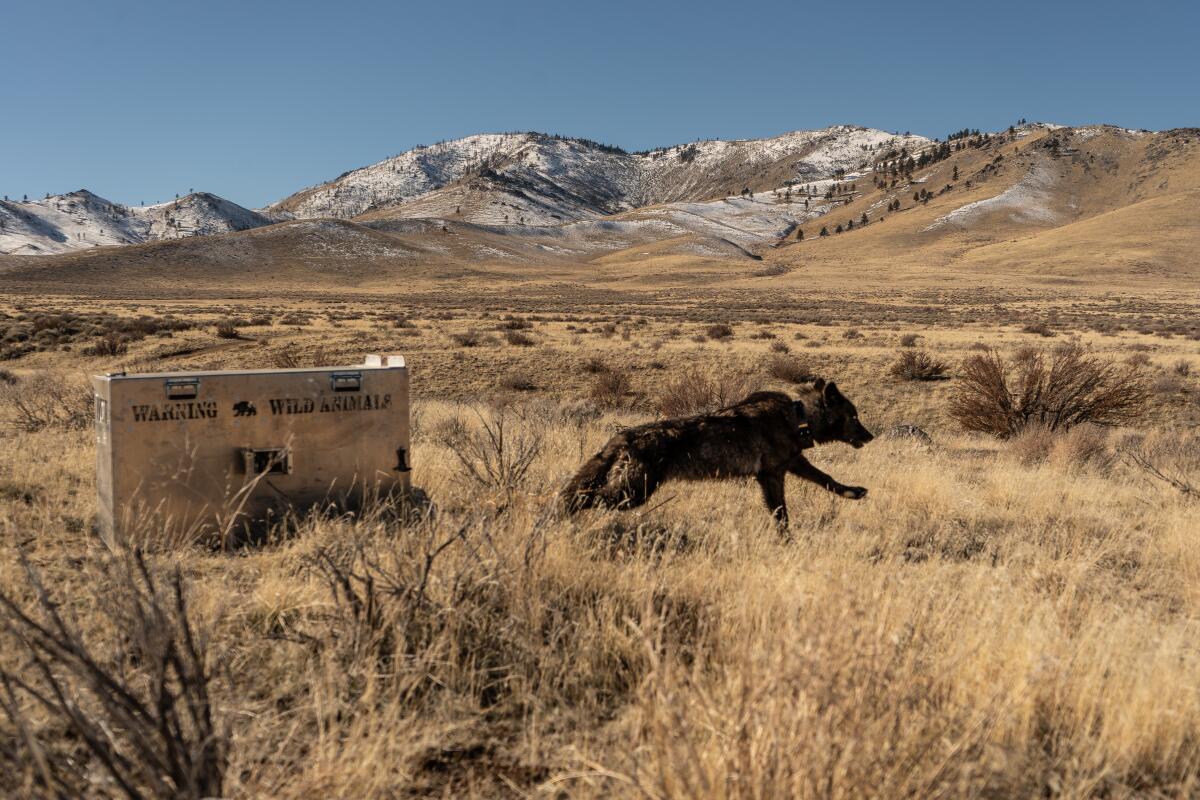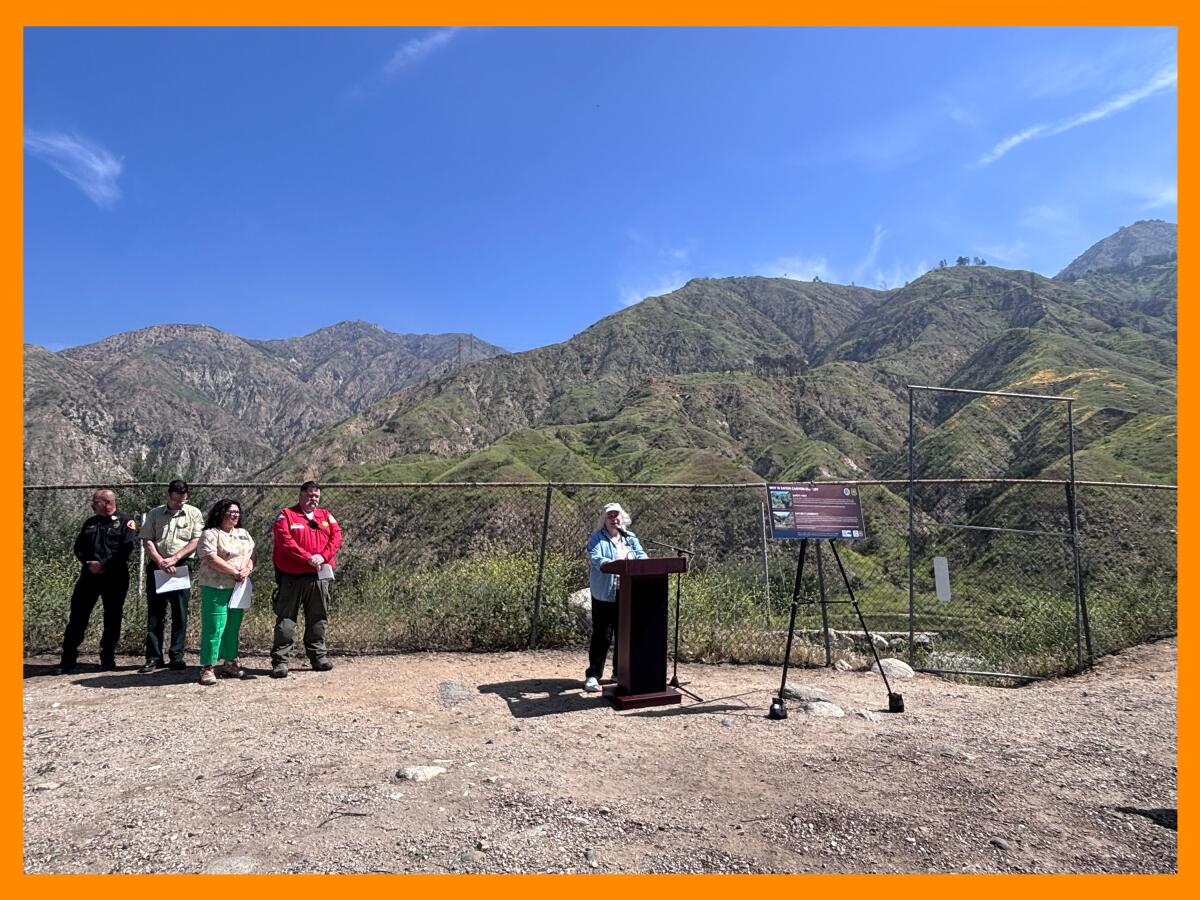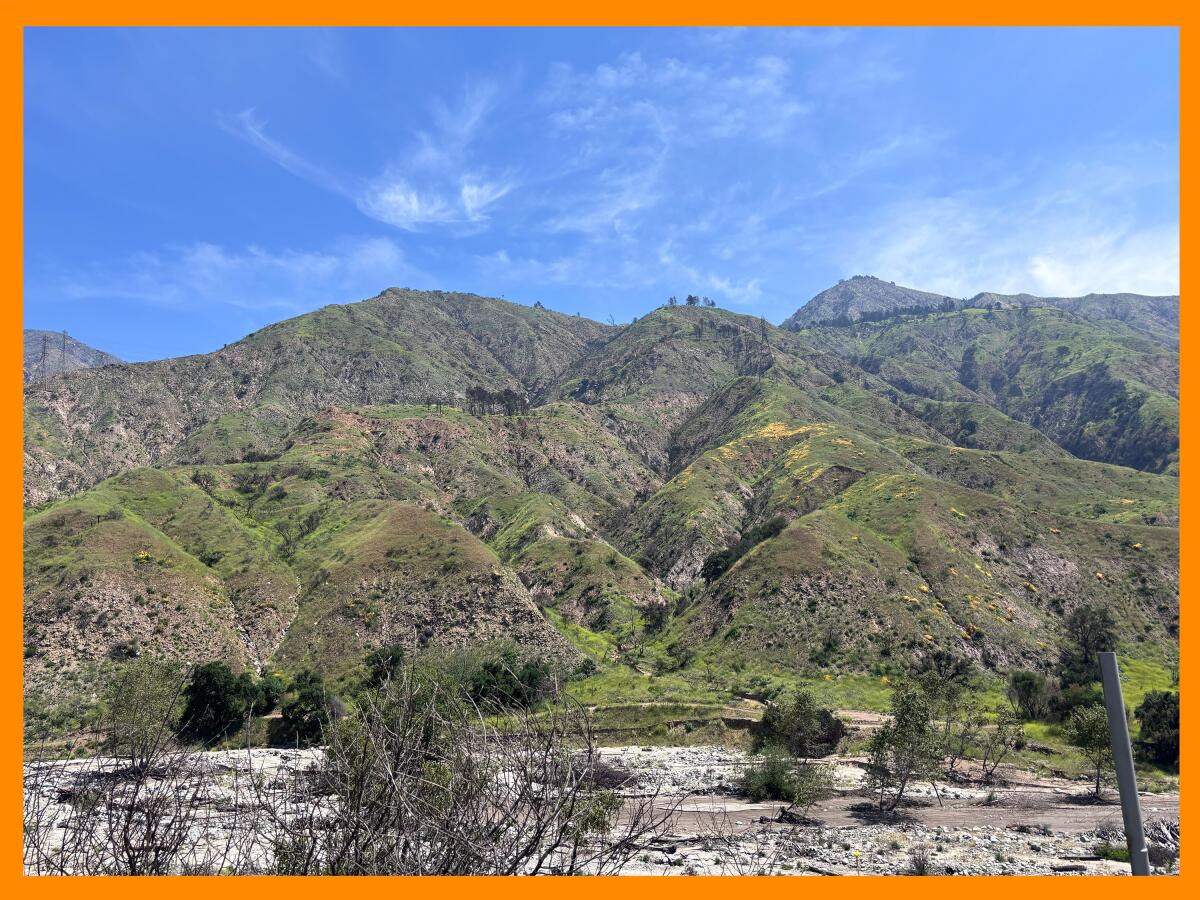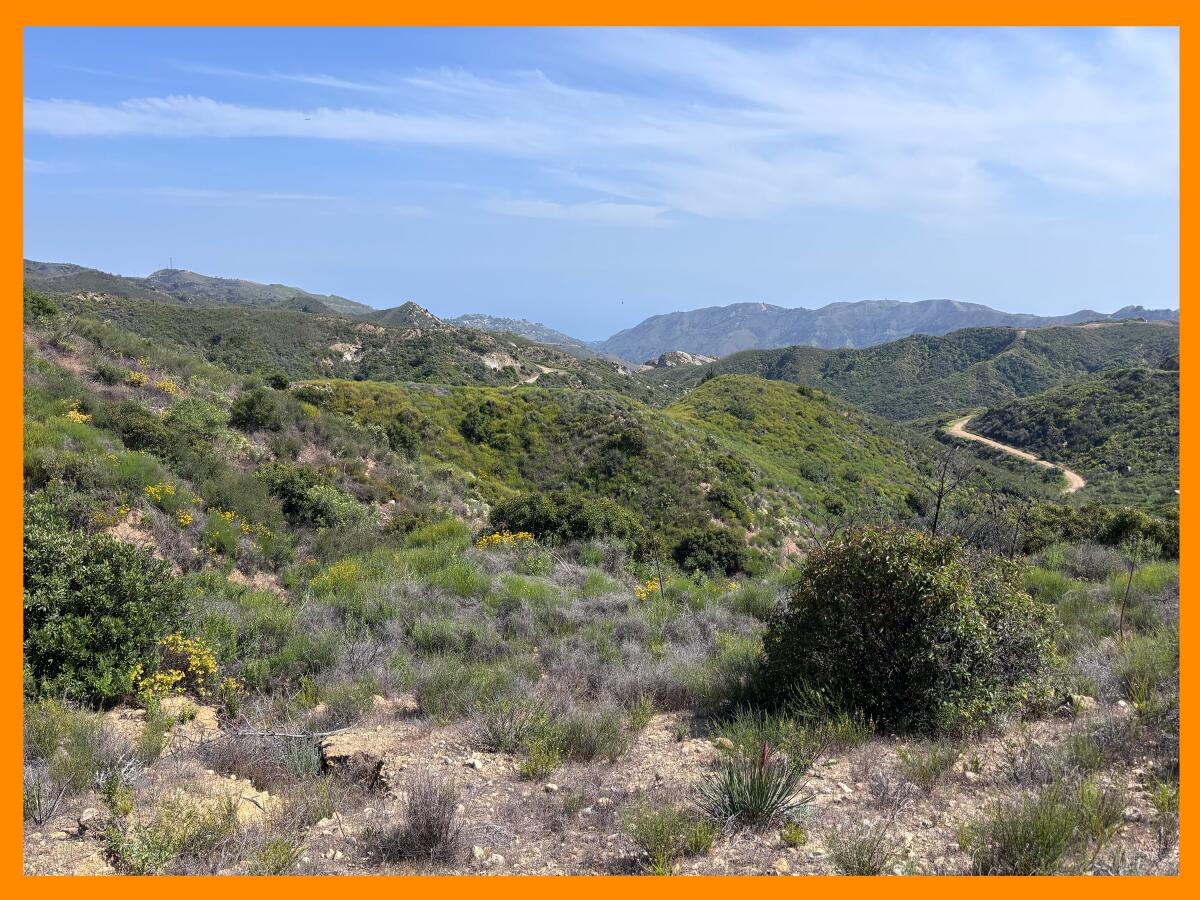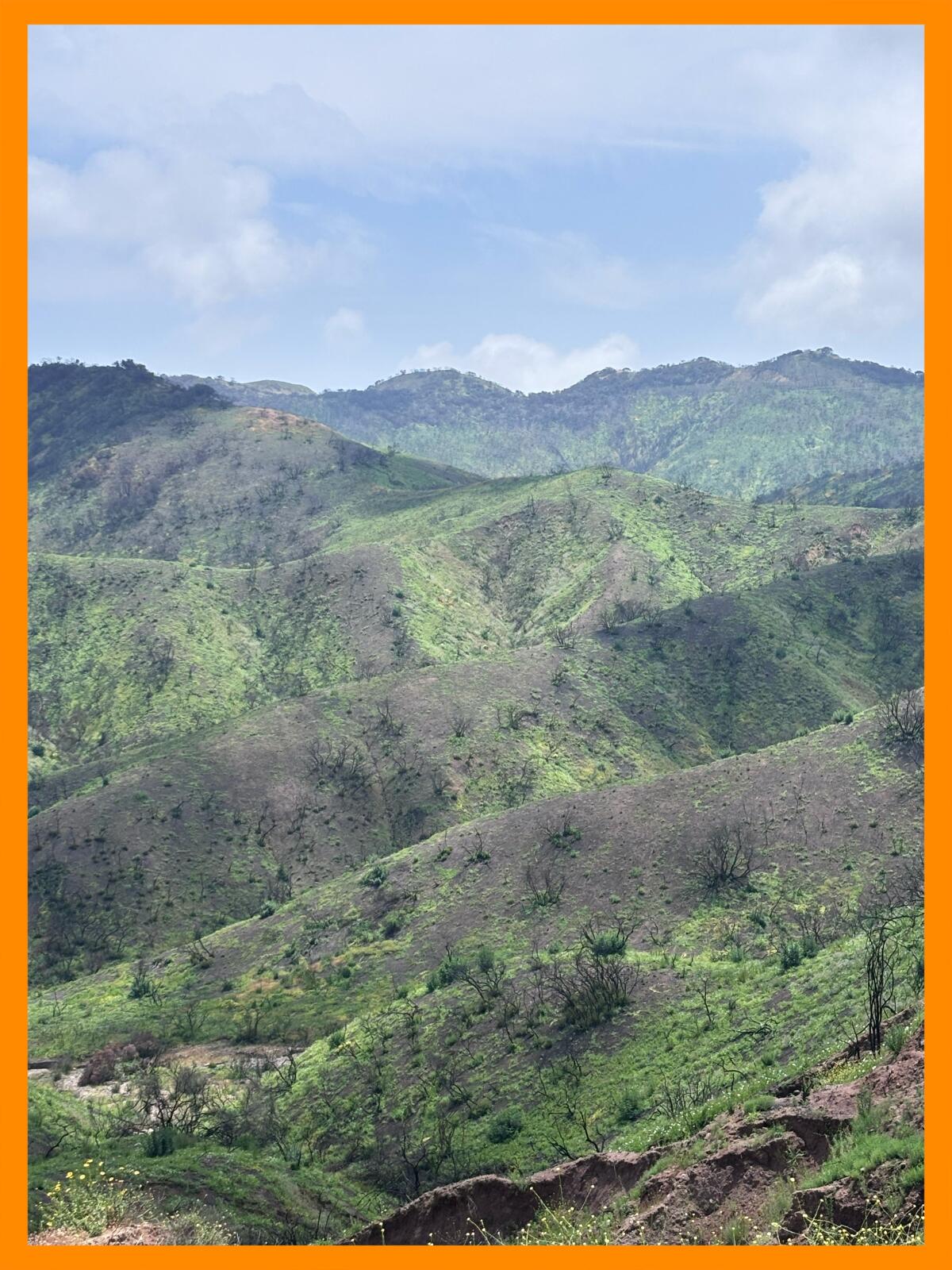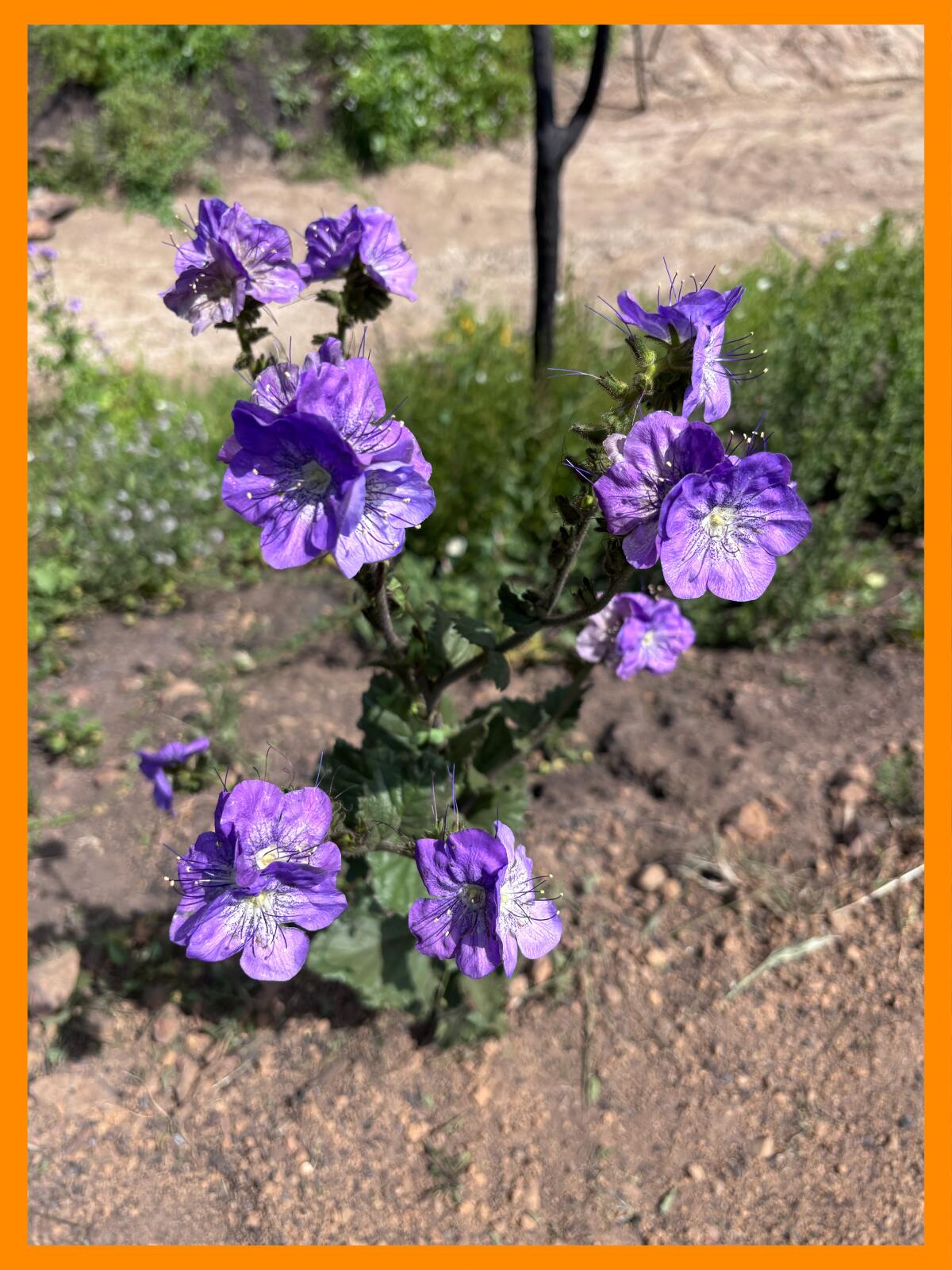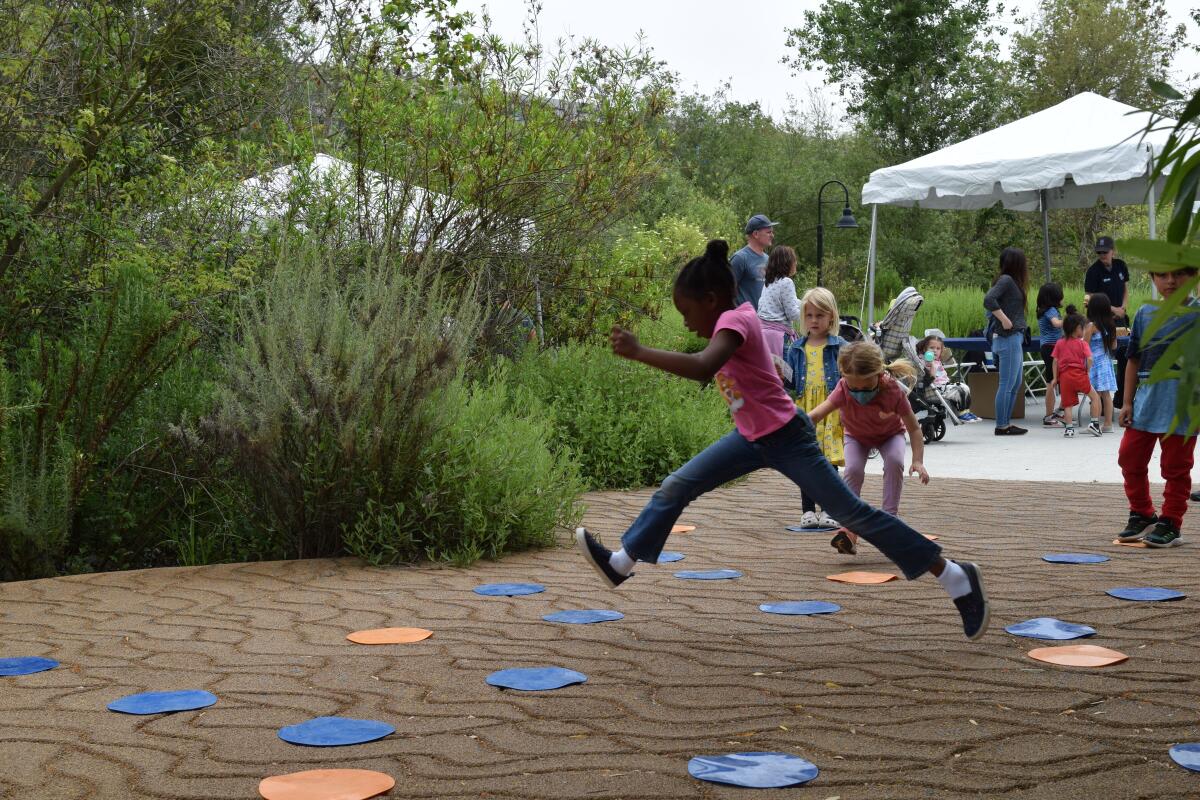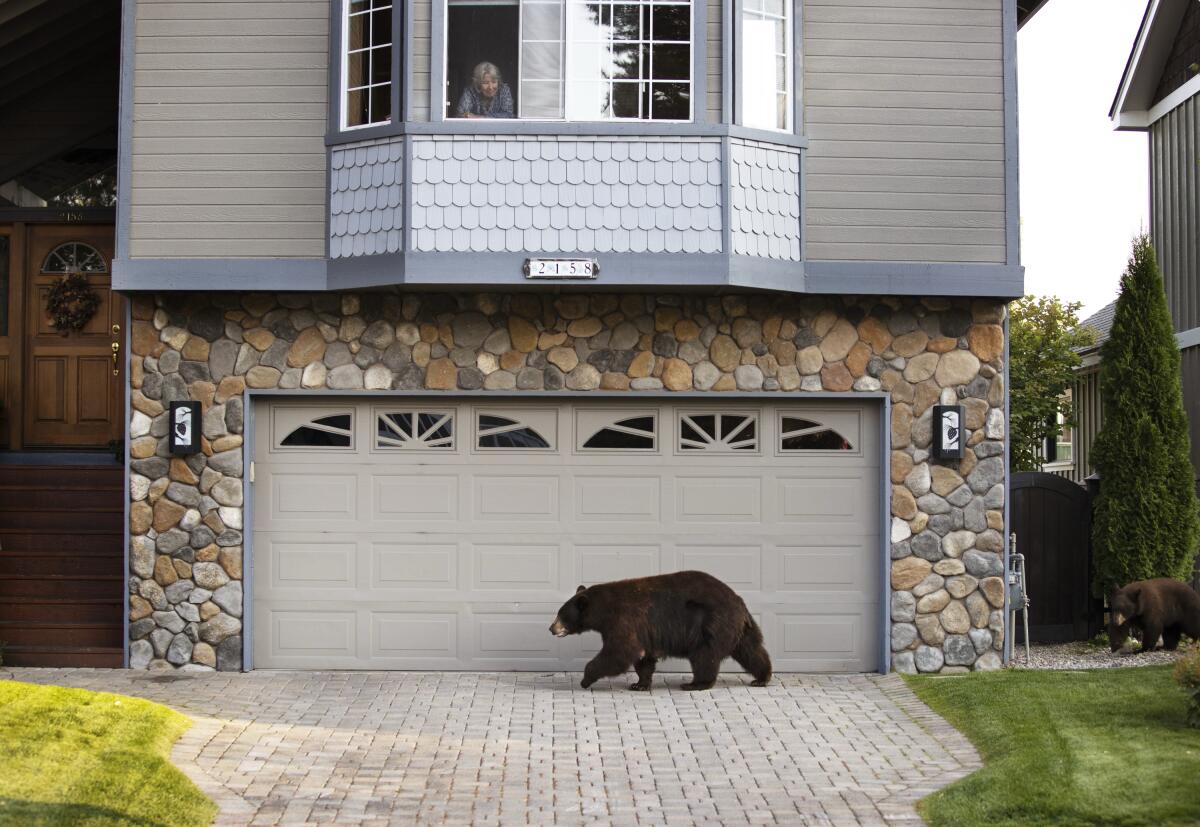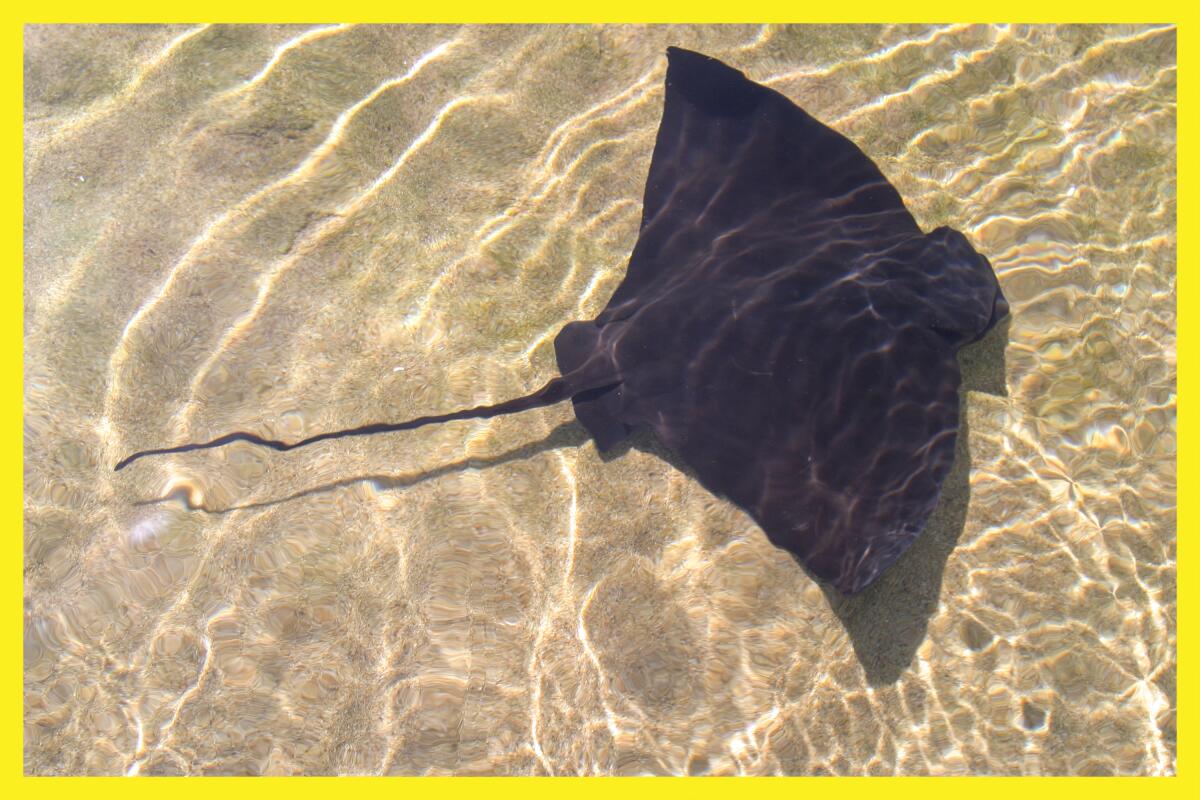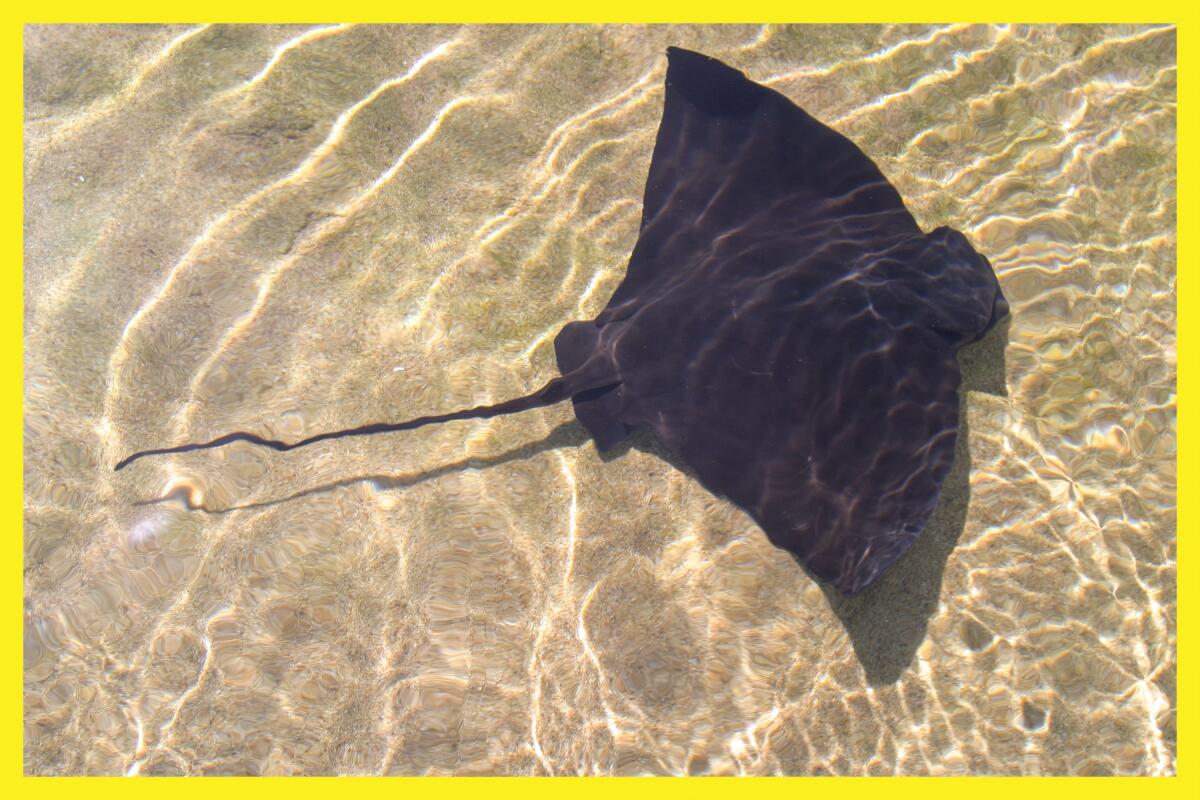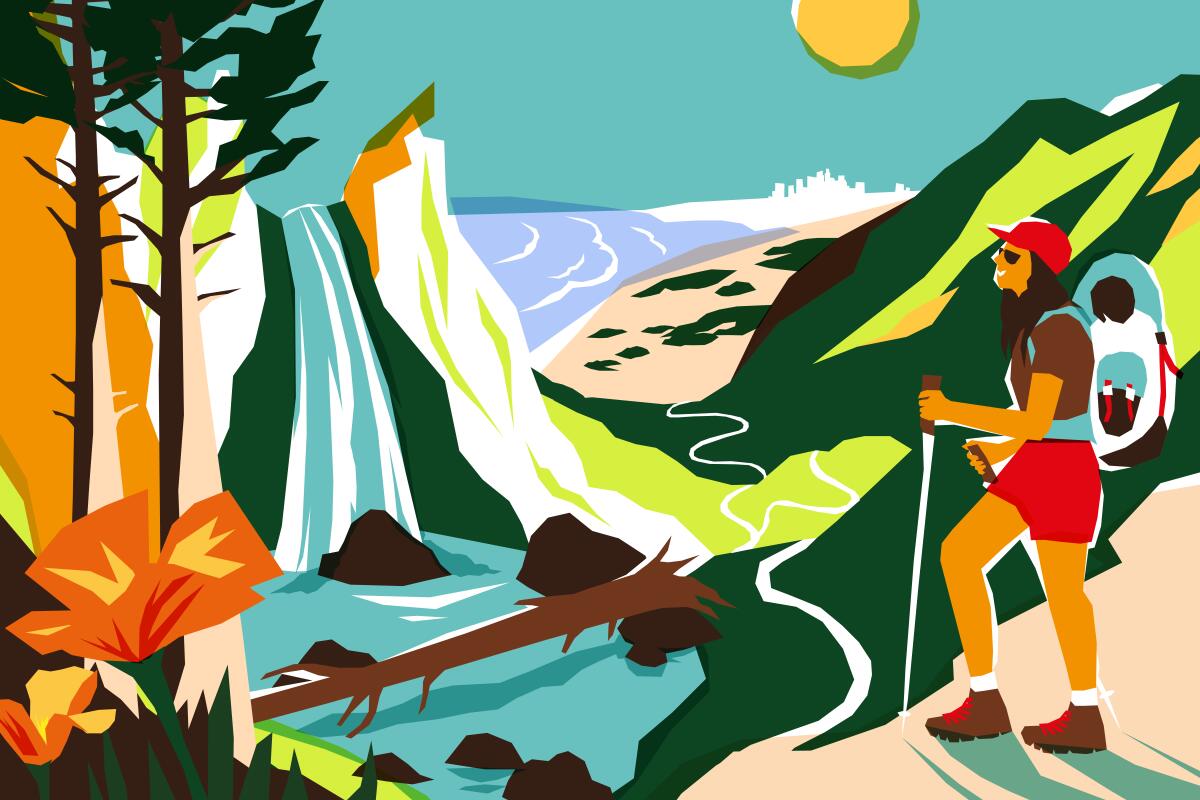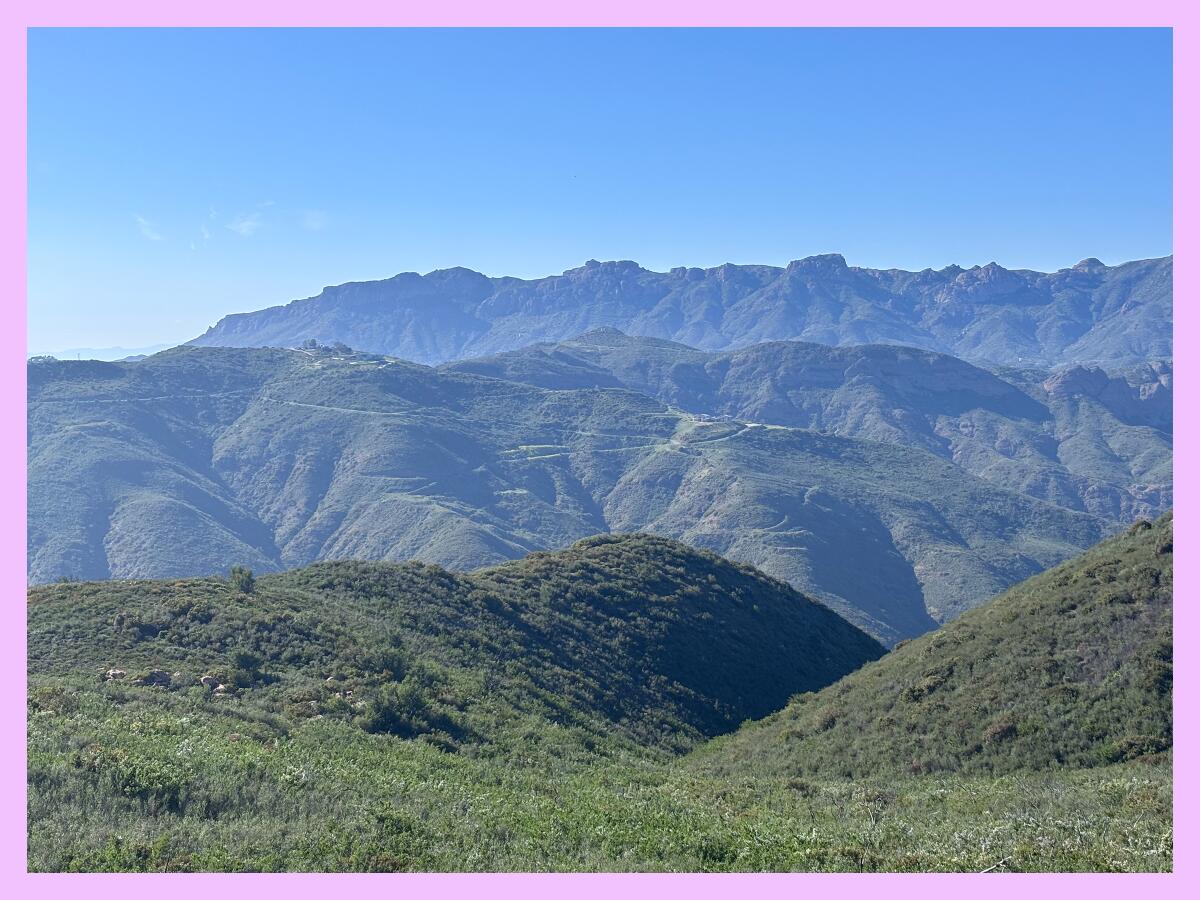‘Jaws’ was wrong. Great white sharks are not mindless killers
Duhhhh-nuh. Duhh-nuh. …
Friday marks 50 years since the 1975 film “Jaws” from Steven Spielberg introduced audiences to that infamous John Williams movie score — and the fear that they should clearly feel over the great white shark lurking just beneath their feet, waiting to chomp down on their dangling legs as they enjoy a day at the beach.
Except, over the past six decades, marine biologists like Chris Lowe at the Shark Lab at Cal State Long Beach have found that great white sharks and their selachian counterparts not only don’t want to eat humans but also would like to avoid us if at all possible.
“Believe it or not, a lot of the times they’re big babies. They’re big scaredy-cats,” Lowe told me.
Newsletter
You are reading The Wild newsletter
Sign up to get expert tips on the best of Southern California’s beaches, trails, parks, deserts, forests and mountains in your inbox every Thursday
You may occasionally receive promotional content from the Los Angeles Times.
As part of the series I’ve completed over the last year in The Wild, exploring how to react should you see a potentially dangerous animal on the trail, I spoke to Lowe, who has studied sharks for the past 35 years, about how you should react if you see a great white shark in the wild.
Lowe said that unlike 50 years ago when “Jaws” was filmed — where sharks’ populations were so low that even the “Jaws” filmmakers could barely find a shark in the ocean to record — the great white shark population has bounced back thanks to conservation efforts.
“Sharks are probably swimming by people way more often than they would ever imagine — they just don’t know they’re there,” Lowe said. “I think your chances of seeing a shark, any shark — a white shark, a leopard shark, a bull shark, a tiger shark, no matter where you go — is actually getting much better.”
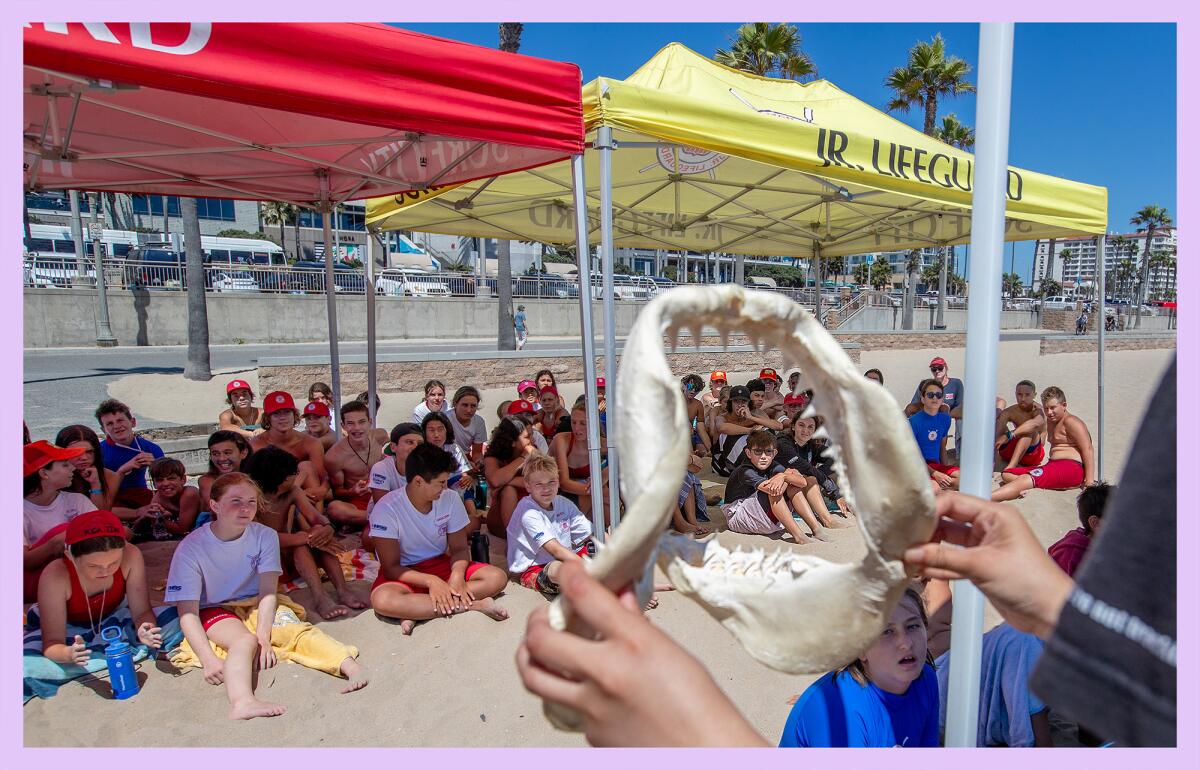
Cal State Long Beach Shark Lab student assistant Julianne Santos shows Huntington Beach junior lifeguards a white shark jaw during a July 2023 presentation.
(Allen J. Schaben / Los Angeles Times)
Please note that my conversation with Lowe focused on how a beachgoer should react if they see a great white shark off the coast of a Southern California beach, and I primarily asked him for tips for folks swimming or snorkeling. The Shark Lab has a great short guide for surfers, and there is other guidance available for spearfishers.
All right, no need for a bigger boat. Let’s dive in.
1. Observe the shark’s behavior
You’re swimming in the ocean, perhaps snorkeling, and you see a great white shark swimming about 20 feet from you. First, “take a deep breath and go, ‘Wow, that’s so cool,’” Lowe said.
Next, observe what the shark is doing. Is it relaxed? Has it spotted you yet?
Lowe said that oftentimes, you will see a shark because the animal wanted you to or allowed you to see it. The majority of human-shark encounters in Southern California occur without the human ever knowing it happened.
“We see it all the time from our drones — they’ll come up behind people, and in fact get what I would consider uncomfortably close to people, and then it’s almost like [they think,] ‘OK, that’s not what I thought it was,’ and then they just turn and take off,” he said.
I asked what uncomfortably close means, thinking 15 feet, 10 feet. “Three feet,” Lowe told me.
2. Keep your eye on the shark
“Let the shark know you see it,” Lowe said. “As the shark is swimming around you, you should pivot to always face the shark. That is part of this body communication that all animals use. If you’re ever threatened, do you ever turn your back on the threat?” (No.)
Move calmly and naturally as you float in the water. Do not throw anything at the shark or jerk around.
Most often, this is where the encounter ends, Lowe said. If the shark doesn’t feel threatened, you’ll observe the shark until it leaves the vicinity, and then you can alert a lifeguard of what you saw.
3. If you suddenly lose track of the shark, look behind you
You might have (even accidentally) startled the shark by moving too quickly.
When Lowe and his students go out into the ocean to tag sharks, they will pull up next to a shark and start recording it with a camera and taking other measurements. But if they startle it or if the shark feels threatened, the shark almost always loops around and tries to get behind the boat. It’ll do the same if you scare it.
People mistake this as the shark stalking them. “Actually, no,” Lowe said. “That’s how it’s investigating you safely. People forget these animals are just as much worried about their safety as we are [worried about ours].”
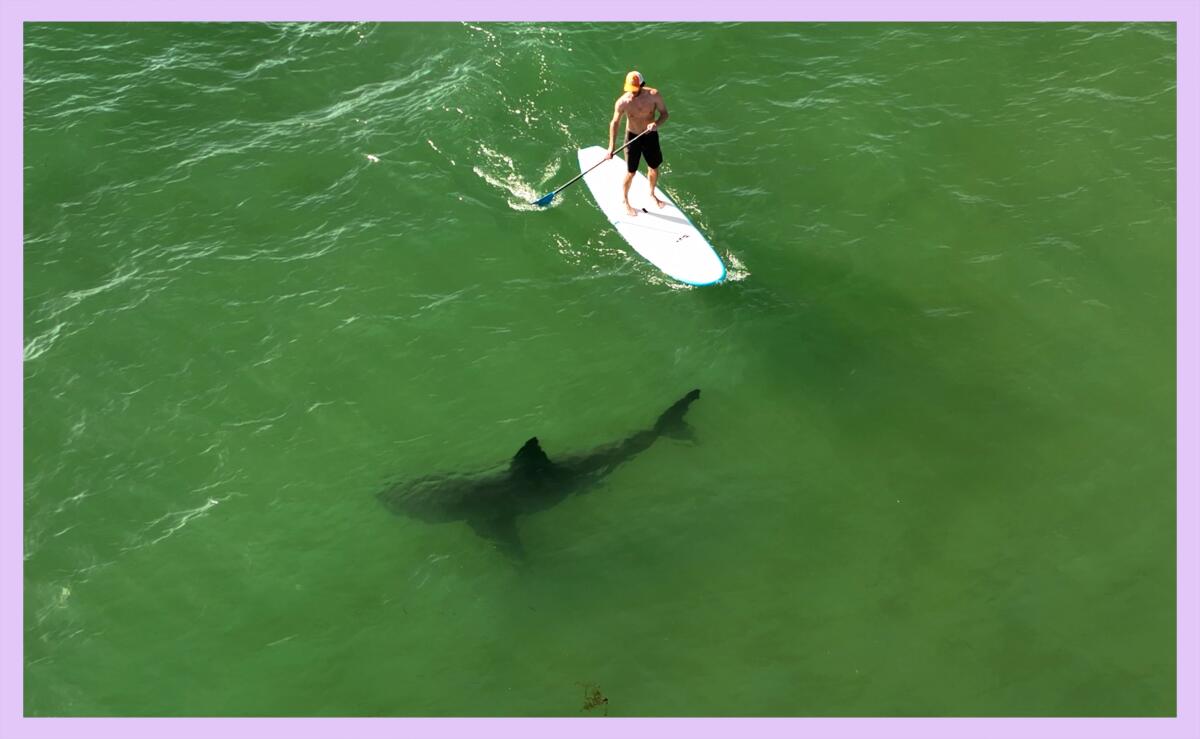
Researchers with the Shark Lab at the Cal State Long Beach have found that sharks and humans swim together at some California beaches more often than previously thought.
(Carlos Gauna / Cal State Long Beach)
4. Keep your distance as you keep watching the shark
If a shark feels threatened, it will arch its back and drop its fins and start an exaggerated slow-motion swimming behavior, Lowe said. “They will open their mouths, they’ll bear their teeth,” similar to an angry cat, he said.
You should, if you haven’t already, start to back away slowly from the shark, maintaining eye contact. Unlike the movies when people thrash out of the water, you want to backpedal at a normal speed. Remember, this animal is likely scared too.
Do not move toward the shark. “If you chase that shark, if you pursue it, it will break out of that behavior, and it will rush in and bite. And then it will take off,” Lowe said. “That’s a defensive response.”
5. If the shark gets in your space, bop it on the nose
Hopefully your encounter has ended by now, as this next tip is for exceedingly rare instances when a shark is getting in your space.
If you’ve been backing away from the shark, and it keeps coming toward you, getting within arm’s length, give it a “good pop to the nose,” Lowe said.
“The animal has to know you’ll defend yourself,” he said.
How hard should you strike its nose? “It’s not a little flick, it’s not a hand wave,” Lowe said. “You want the animal to know you will defend yourself because, in many cases, they are just as afraid of getting hurt as you are. A little bop on the nose quite often is enough to stop that from happening, and of course, you keep backing up. That’s the best you can do in those circumstances.”
6. If attacked, fight back with all you’ve got
If the shark bites you, you should punch it in the nostrils, eyes and gills. “There are pretty good eyewitness accounts of people fighting back, and that making a difference and then getting the shark to release. And in some cases, they don’t even see the shark after that,” Lowe said.
Most sharks bite once and leave.
Like other apex predators in California, sharks have in rare instances attacked and, in even rarer instances, killed people.
In the past 75 years, there have been about 223 shark incidents in California, with “incident” defined as a documented encounter where a shark touched a person or their surfboard, paddleboard, kayak, etc., according to the California Department of Fish and Wildlife.
Of that, at least 195 of the incidents involved white sharks. None of the 16 fatal shark incidents in California occurred in L.A. County.
These numbers feel even lower when you consider that millions of people visit California’s beaches every year.
Even with the large number of white sharks present along Southern California beaches, swimming and recreating along the coastline remains a largely safe activity, Lowe said. (In terms of risks, you’re much more likely to step on a stingray.)
I hope you will never need these tips and instead have great experiences this summer on our beautiful beaches.
I have to admit that, as someone who grew up in the landlocked state of Oklahoma, I came into this conversation with a lot of fear. It doesn’t help that my wife watches the Discovery Channel’s Shark Week every year. But after talking to Lowe, I feel about sharks like I do about bears and mountain lions. They live here too, and when we visit their homes, we could see them. More often than not, they mean us no harm and want to be left alone to live their lives — just like we do ours.
“People need to stop thinking of these animals as nothing more than these mindless animals,” Lowe said. “They are more like us than [people] think. If somebody was invading your personal spaces, you should defend yourself. You will defend yourself, whether you do it innately or not. The animals will do the same. If they feel threatened, they will protect themselves.”

3 things to do
Note: Out of concern for the safety of community members who could be targeted in ICE raids, multiple outdoors events have been postponed this week. Please check before heading out to make sure the activity you’re attending is still happening.
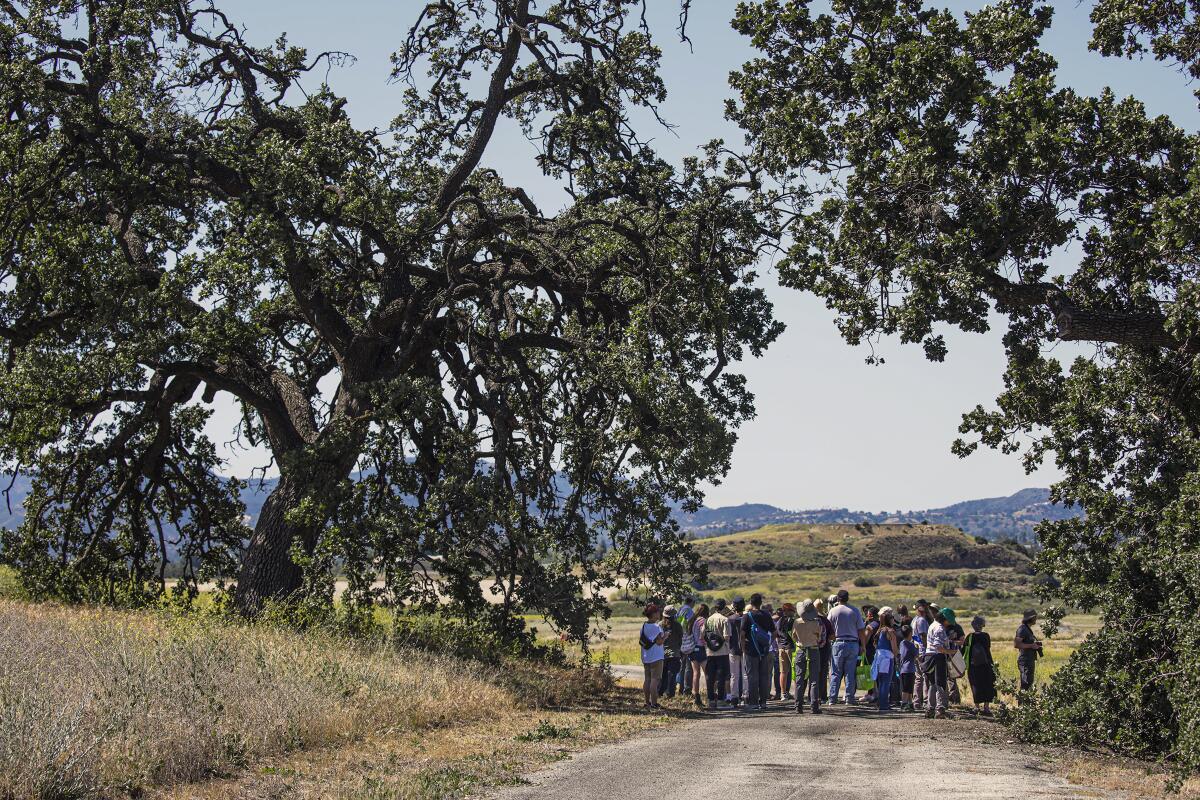
Visitors take a guided nature hike during an open house at the Chatsworth Nature Preserve by the Los Angeles Department of Water and Power in celebration of Earth Day on April 23, 2022.
(Irfan Khan / Los Angeles Times)
1. Hike on the longest day of the year in Chatsworth
The Chatsworth Nature Preserve will host a summer solstice event from 9 a.m. to 1 p.m. Saturday featuring guided hikes, storytelling, live animal exhibits and more. Guests should wear hats and comfy shoes and they should bring refillable water bottles and sunscreen. Dogs are not allowed. Visitors should enter through the Valley Circle Boulevard gate, west of Plummer Street. Learn more at ladwp.com.
2. Tend to trees near Malibu
The Resource Conservation District of the Santa Monica Mountains needs volunteers from 9 a.m. to noon Saturday to care for newly planted oak trees in Nicholas Flat in Leo Carrillo State Park. Participants will water, weed and mulch around newly planted trees and possibly plant acorns to replace trees that died. Volunteers will also collect data for a reforestation project. Volunteers should wear comfortable clothing and durable shoes. Register at eventbrite.com.
3. Celebrate inclusivity and nature in San Dimas
L.A. County Parks and Recreation will host Pride Outside at 5 p.m. Friday at the San Dimas Canyon Nature Center (1628 N. Sycamore Canyon Road in San Dimas). The event will include a hike alongside representatives from Pomona Valley Pride, which is partnering with the county for the event. Learn more at the park’s Instagram page.

The must-read
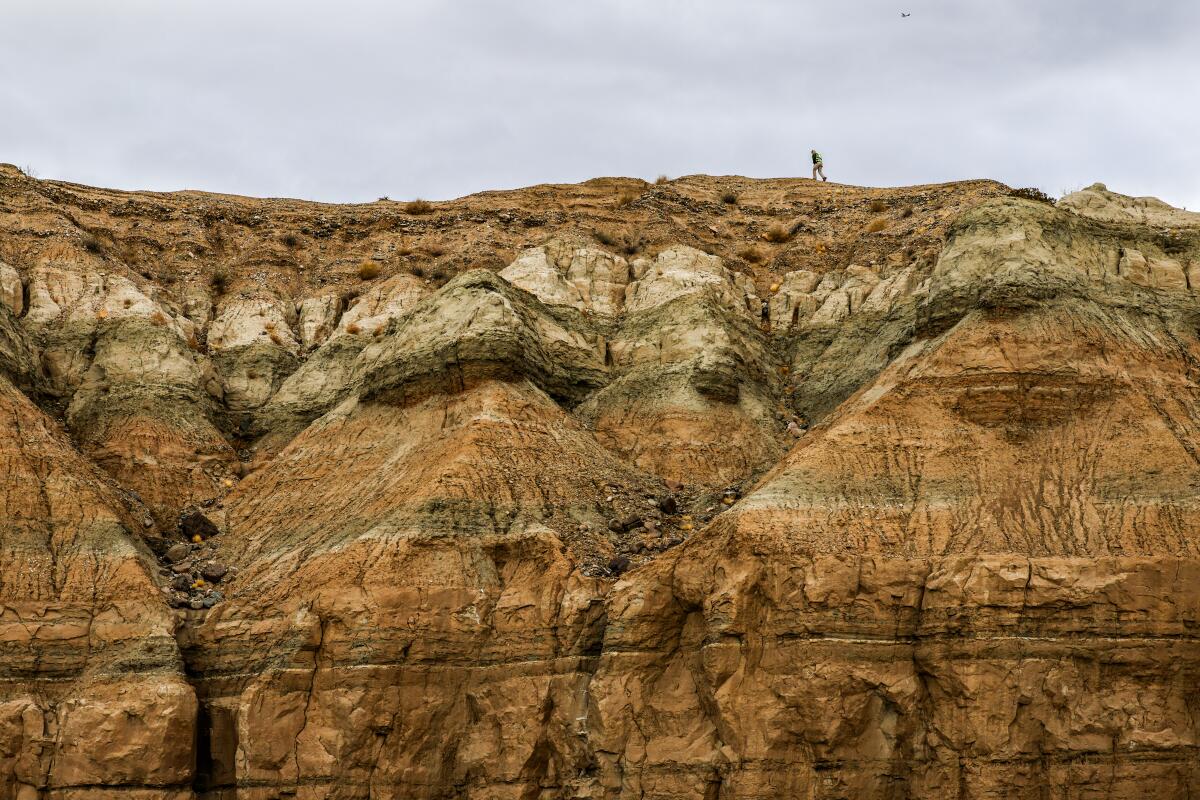
A view of the Chuckwalla Mountains. President Biden established Chuckwalla National Monument shortly before leaving office, protecting over 600,000 acres of public lands in the California desert.
(Robert Gauthier / Los Angeles Times)
The Chuckwalla National Monument, a 624,000-acre desert landscape next to Joshua Tree National Park, faces an increased threat of losing its federal monument status after a recent ruling from the Department of Justice. Times staff writer Lila Seidman reports that a May 27 legal opinion by President Trump’s DOJ overturns a more than 80-year-old Justice Department determination that presidents can’t revoke national monuments created by their predecessors under the Antiquities Act. This opens a wide window for Trump to dismantle Chuckwalla and the Sáttítla Highlands near the Oregon border, which President Biden established as national monuments shortly before leaving office. “Whether presidents have the authority to alter monuments is hotly contested,” Seidman wrote. “Litigation challenging Trump’s previous monument reductions was still pending when Biden reversed them and the matter was never settled.” We’ll keep you posted on what happens next.
Happy adventuring,

P.S.
The Mountains Recreation and Conservation Authority, which manages more than 75,000 acres of public land around L.A. County, announced this week that it is reopening multiple hiking areas closed in response to the Palisades fire. This includes the popular Escondido Canyon Park & Falls, which I’m eager to see, and San Vicente Mountain Park. A few Wilders, who recently emailed me regarding trail closures, will be happy to hear Westridge-Canyonback Wilderness Park and Mandeville Canyon are reopening too. You can read more about other recent trail reopenings here.
For more insider tips on Southern California’s beaches, trails and parks, check out past editions of The Wild. And to view this newsletter in your browser, click here.

